The Article
Vertere DG-1: The Difference Engine
18th September 2020
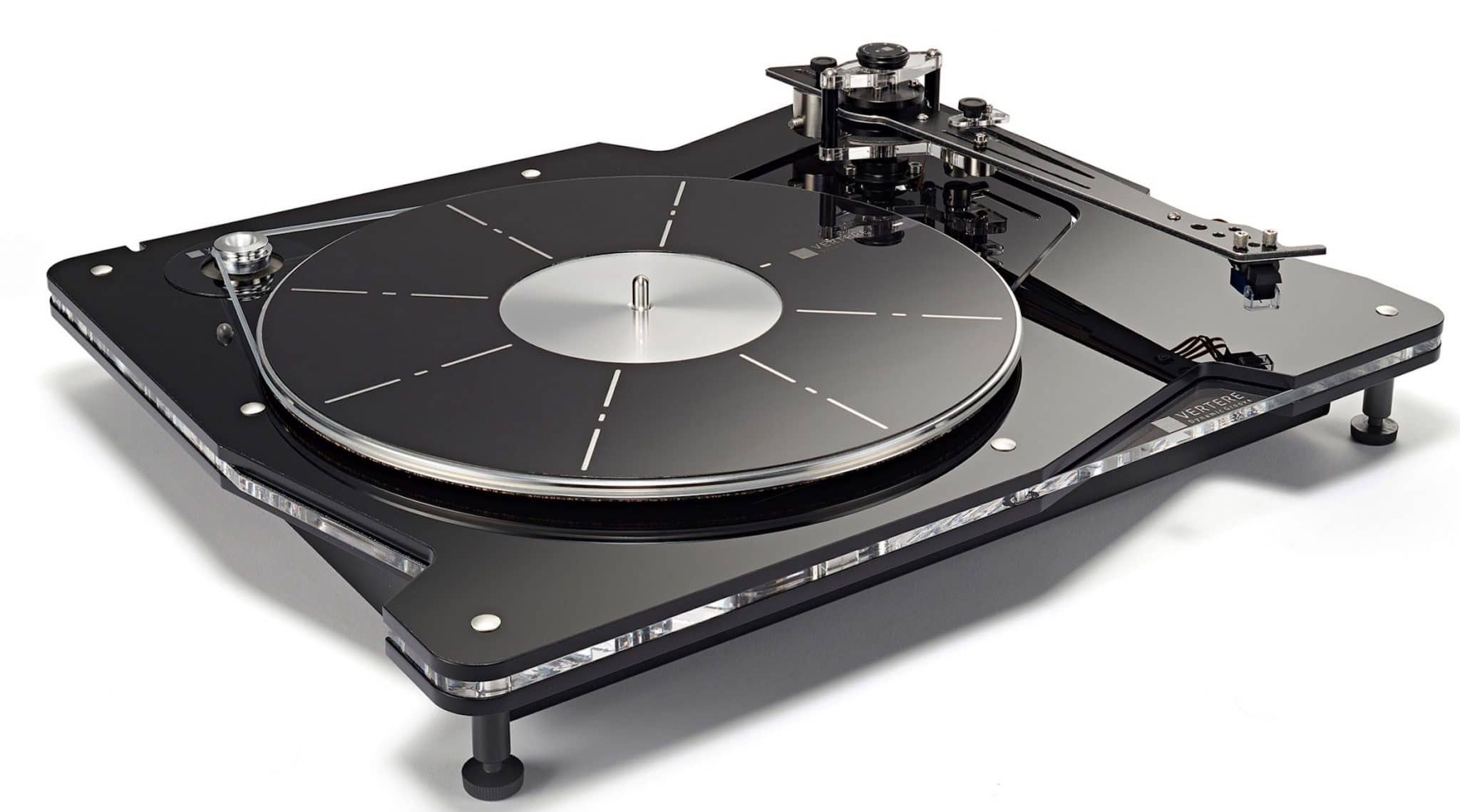
Refusing to run down the same design path as the rest of the industry, Vertere has produced an aesthetically arresting design. Paul Rigby wonders how it sounds
When I first saw this belt-driven turntable I, like many others, was immediately wowed. It looked different. It looked edgy. It made a design statement.
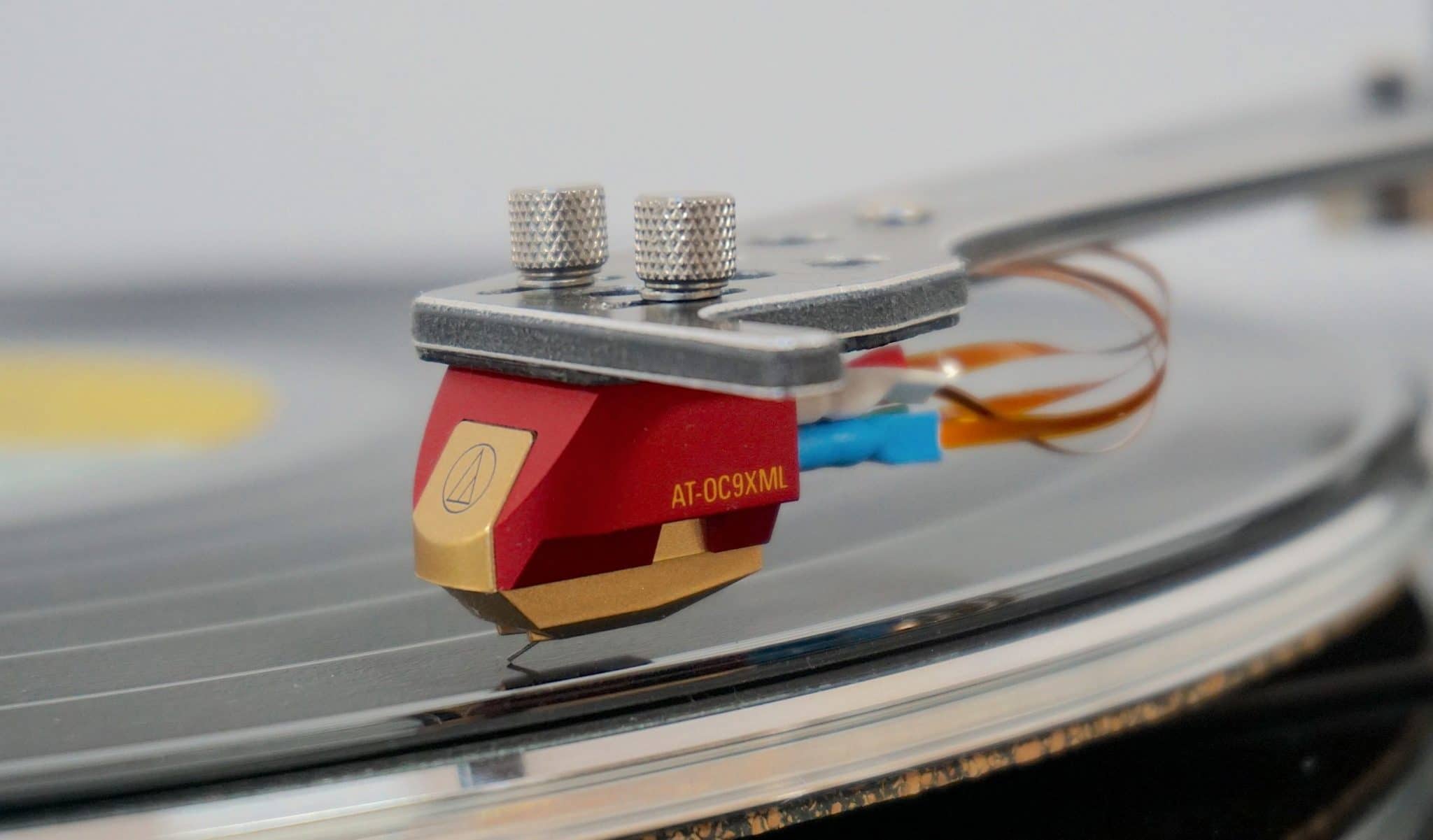
I did wonder if the design wandered in the direction of form over function, though. What I mean by that is, I wondered if more time and effort might have been spent upon the aesthetics than the quest for great sound. I couldn’t tell by merely looking at it, of course. Hence, I wanted to grab a sample to investigate, to hear the reality of the situation as well as see it.
And now I have.
The first ‘problem’ occurred when I was unboxing and installing and occurred underneath the plinth, removing the transport screw. Using a coin, you need to unscrew the transport bolt and pull out the metal housing. Check out this video to see what I mean:
Now, the Vertere chap above makes this operation look so easy, you wonder what all the fuss is about. I wonder what all the fuss is about too, after viewing it. I’m still scratching my head.
Then again, if I’m going to mess up a hi-fi task. I make a damn good job of it. Which is what I did. I was trying to remove the lock, take photographs and film at the same time, unscrewed the bolt, was hanging on to the little tag that sits adjacent to the bolt to keep it in position, had to let go of the tag to handle my camera and the entire metal housing didn’t come out and into my hands…it fell inwards and into the chassis. My fault and I hold my hands up on that. Now, if I had another shot, I’m sure I wouldn’t make the same mistake twice but even so, if I can mess up at all, then others can too. The possibility remains.
I’d like this operation to be redesigned. I’ve seen transport screw removal on many hi-fi products – turntables and others – and have seen much better applications of the same than Vertere’s.
Back on track and flipping over the turntable, I was able to take a view of the design as a whole. Close up, it looks impressive, a study of black and transparent acrylic.
The plinth is offered as a sandwich construction, using non-resonant cast acrylic to form the main plinth and the sub-plinth with silicon rubber isolation between the plinth and the platter assembly. The suspension was stiff – this one’s not a springy/wobbly affair. You need to add a bit of pressure to see sub-chassis movement.
The whole assembly sits on a steel chassis, housing the motor drive circuit and the motor by three slender feet that can be adjusted on a screw thread for levelling. I did notice that the felt pad on one of the feet on my review sample had come away. It was easily reapplied but be aware of this. A dust cover is supplied.
The stainless steel spindle is supported by an Acetal spindle thrust bearing using a tungsten carbide ball.
The DG-1’s 24-pole Precision Synchronous motor is run by an external wall-wart power supply. In case that worries you, the entire motor/power supply assemblies have been worked upon by the company to lower noise.
Changing the speed is accomplished by pressing a simple raised plastic button that looks and feels like an afterthought and sits too close to the belt. It’s too easy to knock and touch the belt, transferring sweat onto the belt itself.
You press this button once for 33.33rpm, whereupon it glows green. Another press increases the speed to 45rpm and a change of colour to red. There’s no indicator on the plinth to say what speed the turntable is running at or what it has been changed from and to. Why? In addition, why should ‘green’ indicate 33.33rpm and red indicate 45rpm? In fact, the human psyche says the green is ‘good’ and red is ‘bad’. Which is doubly confusing. This area seems wholly random. Something thought up after a few drinks in the pub.
I have seen turntable speed selection without labelling before but at least they utilise a form of logicality. For example, twist a knob for 33.33rpm, twist again in the same direction for 45rpm. That is, the further you twist, the faster the platter speed. Then reverse the process to turn the platter speed off. That makes some sort of sense. The Vertere option does not.
I asked Vertere about this feature and it replied, “All Vertere TT (record players in Vertere language) are illuminated in some way but the DG-1 being a little more budget it was felt a change of colour would be good. No harm in a little fun if it doesn’t harm performance. Don’t really see why the button is an issue?”
Because, in addition to its positioning and colour confusion, the speed selection is anything but intuitive. I actually found it laughable that I had to consult the manual to find out how to change the speed on this turntable and then check it again to see what each emerging colour represented. Turning off the turntable involves a long press of the speed button, incidentally.
GROOVE RUNNER
The DG-1 three-layer, one-piece Groove Runner tonearm uses a flat profile, as opposed to the standard tube-like construction with a flexible PCB sandwiched into the arm itself to carry signal from the cartridge to the output terminals. No tonearm cables are used in the arm itself. An intriguing design choice.
[Above and below) I asked Vertere about its pulley system and it commented, “..all Vertere record players have motors that are held in a suspension that both helps with starting torque/slip and helps to reduce noise transmission from motor to platter.”The arm doesn’t use conventional bearings but self-damping, twisted nylon threads – one for movement in the horizontal plane and two for the vertical axis. Used, according to the company, to remove ‘stiction’ (i.e. initial resistance to movement). Again, very interesting indeed.
The rear-mounted weight for cartridge tracking force is attached by a screw bolt and hangs below the arm. Changing the weight’s position includes loosening the upper bolt and sliding the weight assembly forwards or backwards to change the tracking force. Doing so is…fine. The sliding action can be a little sticky, the weight hardly moves smoothly, but it’s certainly doable.
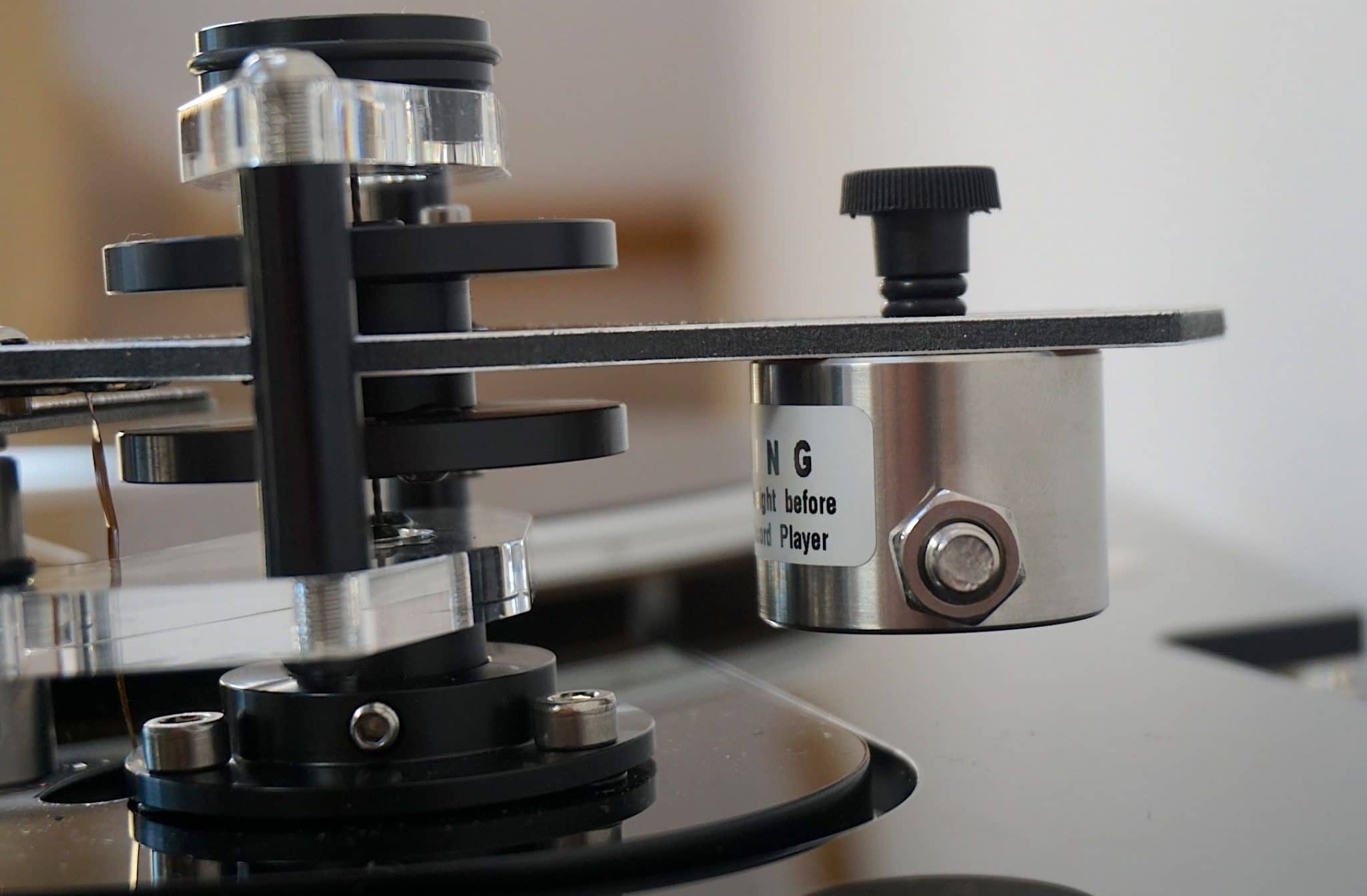
The rear-mounted tracking force weight is there to find a general figure. More refined alterations are handled by another sliding weight option across the tonearm itself. This weight can be moved by loosening an Allen screw and the tonearm weight can be shifted from there. Again, the movement was a little clunky but the assembly gets the job done. In terms of mechanical design and the actual use of such a fine-tuning tool, I much prefer how someone like Funk Firm implements its tonearm tracking force weight. OK, that features a tonearm tube but the movement of the fine-tuning weight is based on a smooth-running collar that can be altered by fractions with the simple nudge from a protruding finger. Moving the DG-1’s weight requires that you grab and drag.
Just be aware that the platter is semi suspended. That is, because it’s thin and doesn’t depend on a large, massy structure, you are able to push the outer areas of the platter whereupon it will ‘give’ under your push, tipping it down towards the plinth. Let go and the plinth returns to its position.
That’s not a problem but can be it you use a heavy gauge to measure the tracking force of your cartridge. I use a force gauge from Rega which is relatively heavy. Too heavy for this platter. A smaller, lighter digital gauge should be fine, though.
Talking about tweaking the cartridge, there’s a top-mounted anti-skate wheel positioned on the rear of the arm. I set my own anti-skate by ear but there’s no numbered gauge so you’ve no idea what setting the anti-skate is currently running at and you’ve no idea how much anti-skate you’re applying. The manual tries to help but doesn’t get the job done, either.
I asked the company about the wheel and it replied, “There are generally two types of customer who will buy the DG-1, the enthusiast and the music lover. The enthusiast will either set the anti-skate by ear as you have done or will ask his retailer to do so. It comes out of the box set to work with most cartridges at a tracking force of 1.8-2.1g and is certainly set correctly if a cartridge is fitted at Vertere. The music lover will almost certainly buy the it with a cartridge fitted and just set the tracking weight as per the video.”
I’m sure there are plenty of other users who will want to add their own cartridge which might very well be set at a different anti-skate setting. Quite apart from the latter, it would just be nice to be reassured that the wheel is at the correct setting. Being able to visually confirm that setting is everything, I feel. As is? Many users will feel completely in the dark.
On the platter surface are a series of lines that can be used to set your cartridge angles but I preferred to use my own jig.
Finally, there is a transport screw on the tonearm that needs removing before play. That’s easily done and, in this case, it’s well designed. I did notice that, for day-to-day use, there is no restraining clip for the arm.
Nothing to prevent the arm flying away if accidentally knocked. Hence, I had to use the transport bolt to keep the arm in place when not in use. That there is no easy-to-use safety clip to keep the tonearm in its housing/yoke is a puzzling oversight. Using the transport bolt is clunky and, because it’s loosely applied, can possibly be dropped and lost. That you have to use the transport screw to act as a pseudo-restraining clip at all is unsatisfactory.
The belt is of silicon construction and bespoke in nature while the platter is aluminium but also features a cork/rubber layer placed at its base. Spanning 469 x 384 x 130mm and weighing 8kg, the plinth is illuminated by a white light on the front of the plinth that points forwards, adding an “ambient” aura. I wasn’t a fan of this.
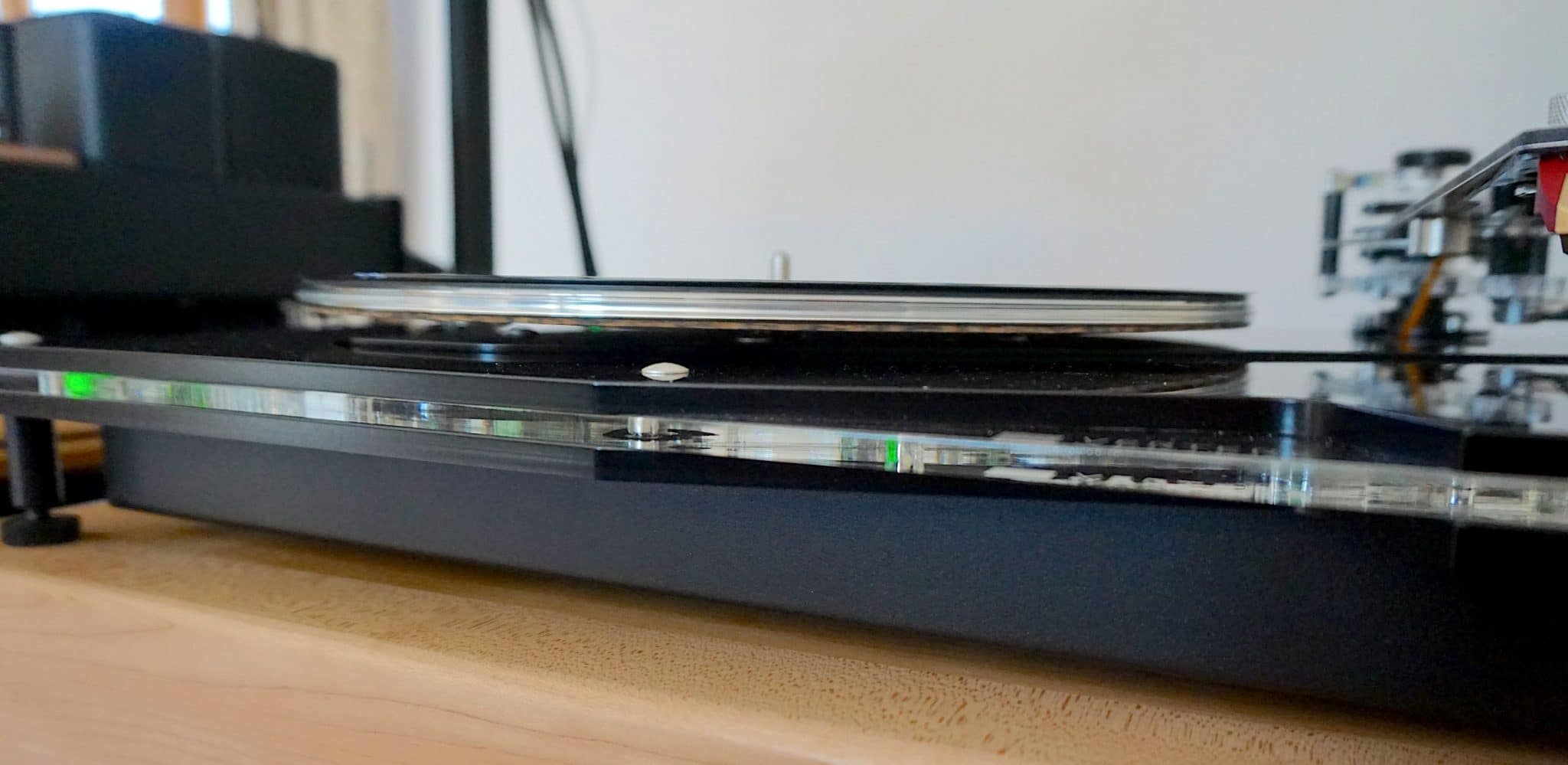
The novelty of the light was fine for all of five minutes and then I found that the white light glared at me in the low-key illumination of my listening room. The glare is something you can’t really appreciate by the images here.
You can turn off the illumination if you wish but you have to run through a series of button presses via the speed button to do that. I would have preferred a simple button on/off switch. Something recessed, under the lip of the plinth, perhaps?
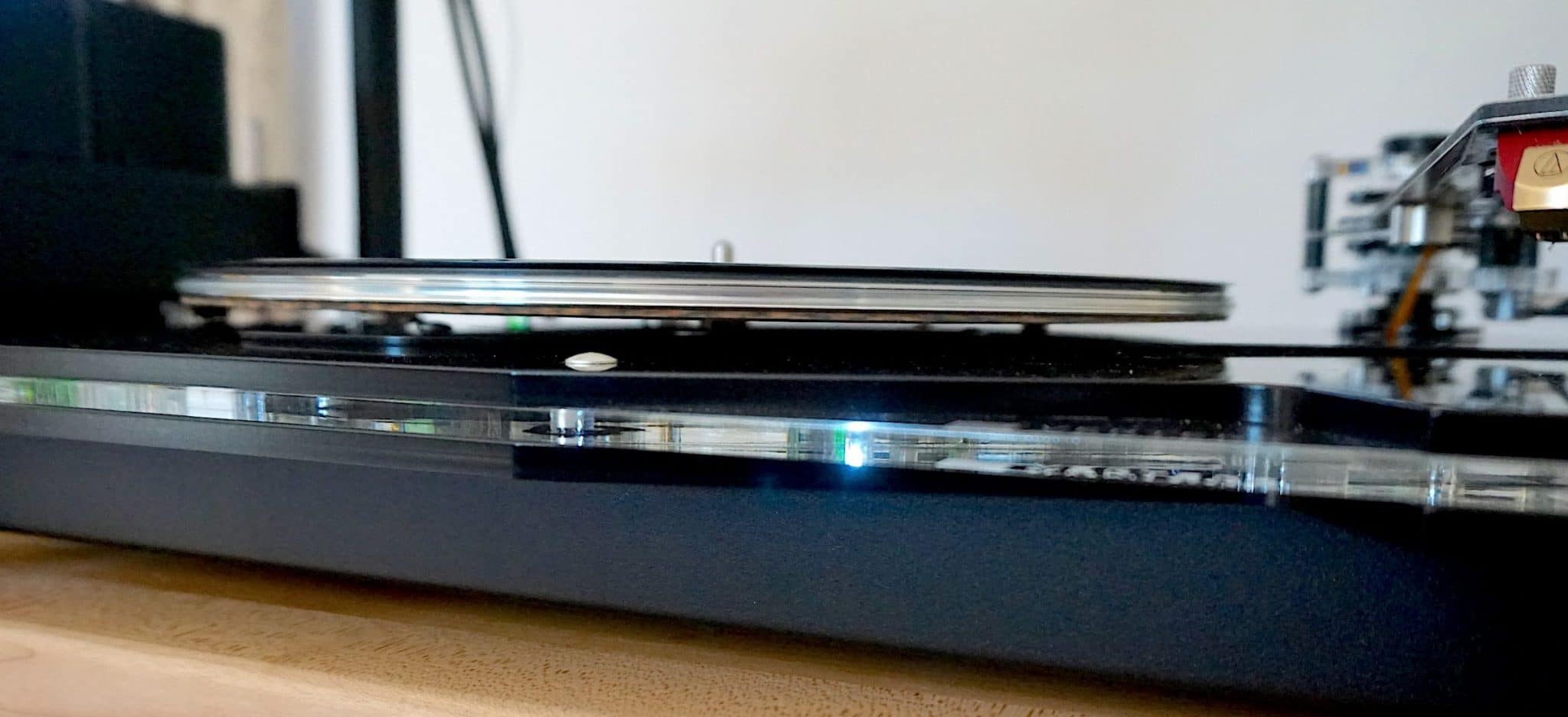
A Curate’s Egg then. There are many innovative and excellent features within the overall design and Vertere should be applauded for having the gumption to try something different in the first place. Some of these features work better than others, it has to be said. Those I have criticised are not a major problem but they don’t help installation or general use, especially if the user is less than experienced.
So how does it sound?
SOUND QUALITY
I began with a folk outing via the UK group, the self-titled album from Gryphon on Transatlantic from 1973 sporting lots of varied, organic instrumentation and frequency extremes.
The design of the DG-1 might be quirky and a tad eccentric but there’s nothing quirky about the sound quality. In sonic terms, the Vertere is quite magnificent. At least from this folkish outing. We’ll get to high-energy rock later.
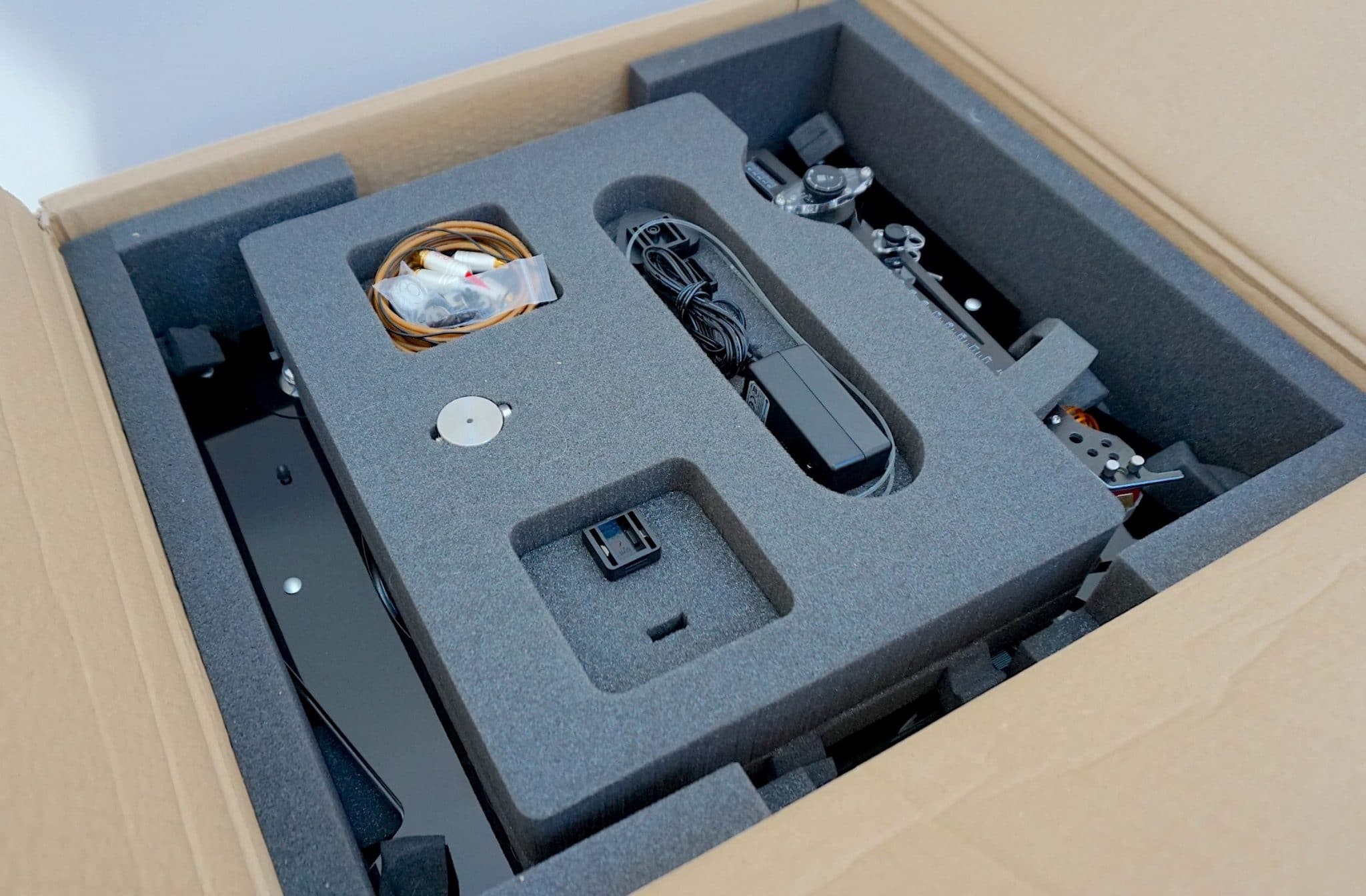
What struck me here was both the tonal realism and tonal balance from this turntable. Both fundamental in how music is presented to you, the realism from the DG-1 was quite magnificent.
For example, there was one acoustic guitar element on the track Sir Gavin Grimbold which strummed but then immediately stopped, giving a clipped effect. This strum can sound like a buzz and nothing more because some turntables can’t cope, frankly. They average out the detail instead of conveying all of the subtleties.
The Vertere, on the other hand, tracked all of the detail – brief as it was – so that the ear heard the beginning of a full strum, cruelly cut off in its prime to a sudden halt. Then again and again. The buzzing noise from some turntables of a similar price point was translated by the DG-1 into a suite of short, sharp strums full of information.
Delicate sounds from the mandolin plus secondary percussion such as bells provided impressive accuracy but also that tonal balance I mentioned above. You felt that all of the instrument was on show here, from its natural highs to the lower frequencies within its own presentation. That is, bells didn’t just give the expected ‘ting’ sound but offered information lower down. This meant that the bell hits provided the ear with a more variable metallic sound.
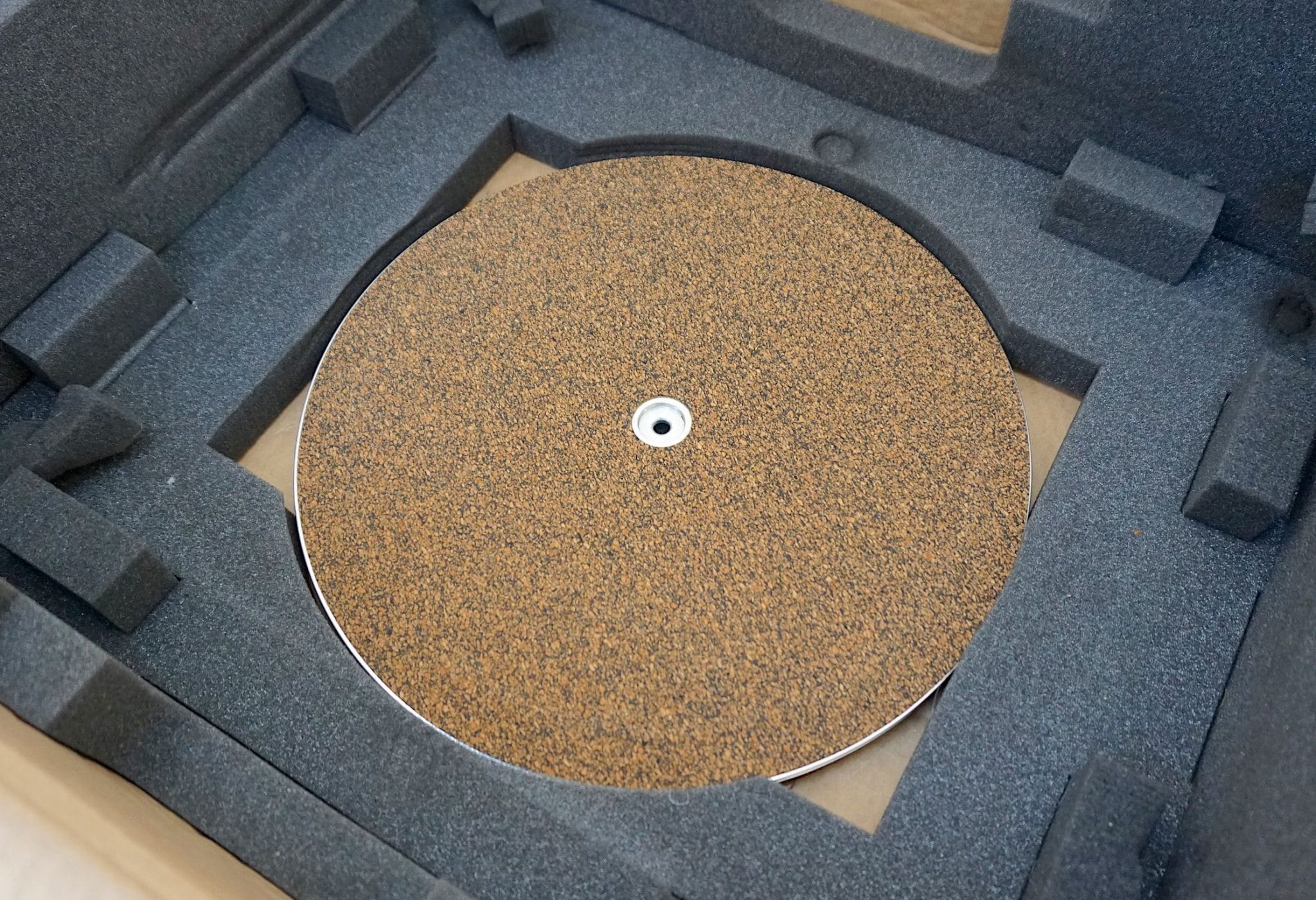
The amount of secondary information from the bell provided valuable detail on the instrument’s size. The Vertere delivered on that point.
The lower noise floor offered by this turntable meant that bass from the percussion had a lean, nimble yet still powerful effect. Hence, the music never dragged or smeared across the soundstage. Instead, the bass pushed the music onwards. There was a foundation provided but also an impetus. Hence, the music sounded fleet of foot and ready to be off.

The accuracy and focus from the upper mids and treble also meant that instruments like the recorder never wandered but had a precision that allowed space to appear in between notes, adding to the natural reverb which gave the overall presentation a richer tone.
I then turned to rock and Queen’s Day at the Races and Somebody to Love. I wouldn’t say that bass was humungous here, over-bearing or dominant. It fitted nicely into the mix and again, offered a natural tonal balance. Bass was provided with an element of finesse, you might say.
I was impressed with the imagery on this track with the lead guitar placed to the rear of the lead vocal, the harmony vocals behind that and so on. The layers created on this track were easily recreated by the Vertere and delivered to the ear in a natural and easy manner without fuss or hardship.
The over-riding effect that I took away from this track on the Vertere was – and I know this might sound odd – the view. The view of the music. The DG-1 provided a panoramic view of what was going on. Taking in a broad sweep, the band were arranged right across the soundstage and that gave the music an epic twist, adding to the grand effect of this rock classic.
I’ve rarely heard a rock track float across my ears so smoothly before. The effect was quite endearing and wholly attractive. Of the sort that would encourage early morning listening. I could easily be flipping vinyl until two (or more) in the morning with this deck. Just to see. You know what I mean, “I wonder what this LP sounds like on this turntable.” That sort of thing.
CONCLUSION
The design of this turntable is bold and adventurous and, as I say above, I applaud the effort and the thought. The results are not always successful but at least Vertere is giving it a go, not playing it safe and trying things out. I appreciate that. It’s only by trying new things that we learn and progress, after all. Staying in the traditional safe zone is fine but you do tend to tread water in that place. Nevertheless, even though I question elements of the design and I did dock a point off the ratings because of it, the DG-1 is still an eminently usable turntable.
But it’s not for the funky design and looks the you should buy this turntable.
It’s for the sound quality which is downright lovely. That is why I have ultimately given the DG-1 an award-winning rating.
The natural way that the DG-1 handles music, how it treats music with a sense of respect but also how music retains its organic and balanced nature. For these reasons and many more, you should take a close look at the Vertere DG-1. It’s a gem. I’m eager to hear more from this company.
VERTERE DG-1 TURNTABLE
Price: £2,750 (Plus a Vertere Magneto MM cartridge will retail for £2,850. Alternatively, bundled with an Audio-Technica OC9XML MC cartridge costs around 3,250. I’d advise going straight for a MC cartridge – the MM model will form an immediate bottleneck in a turntable like this. Personally, I’d spend around £700-£1,000+ for a MC model.)
Tel: 0203 176 4888
Website: www.vertereacoustics.com
GOOD: adventurous design, aesthetics, open midrange, tonal balance, tonal realism, organic bass
BAD: speed switch, ambient light controls, tracking weight controls, anti-skate wheel, transport lock
RATING: 8
[Don’t forget to check out my new Patreon Page at www.patreon.com/audiophileman, for exclusive postings, giveaways and more!]
REFERENCE
Origin Live Sovereign turntable
Origin Live Enterprise 12″ arm
Van Den Hul Crimson XGW Stradivarius Cartridge
Goldring 1042 MM cartridge
Benz Micro Ace MC cartridge
Icon PS3 phono amplifier
Aesthetix Calypso pre-amp
Icon Audio MB845 Mk.II Monoblock Amplifiers
Quad ESL-57 Speakers with One Thing mod
Blue Horizon Professional Rack System
Harmonic Resolution Systems Noise Reduction Components
Gutwire Consummate Grounding Cable
Air Audio AC-2K Balanced Transformer
All vinyl was cleaned using an Audio Desk’s Ultrasonic Pro Vinyl Cleaner

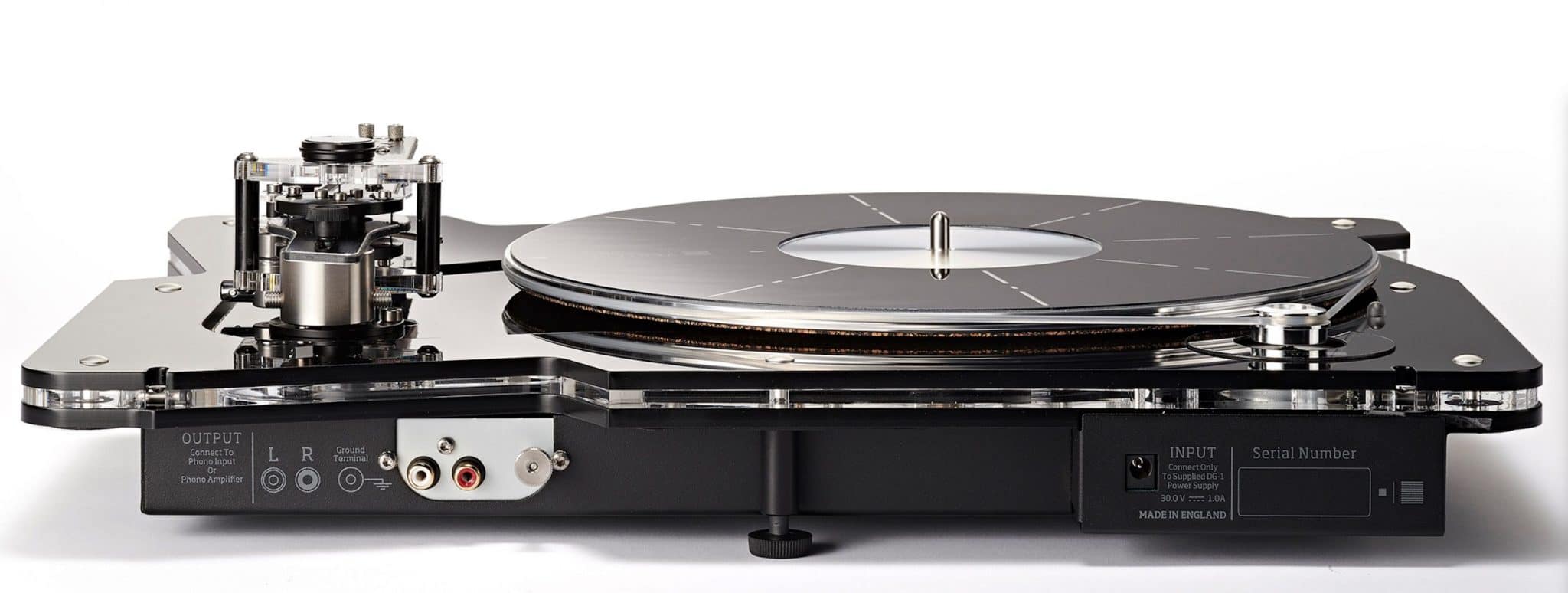
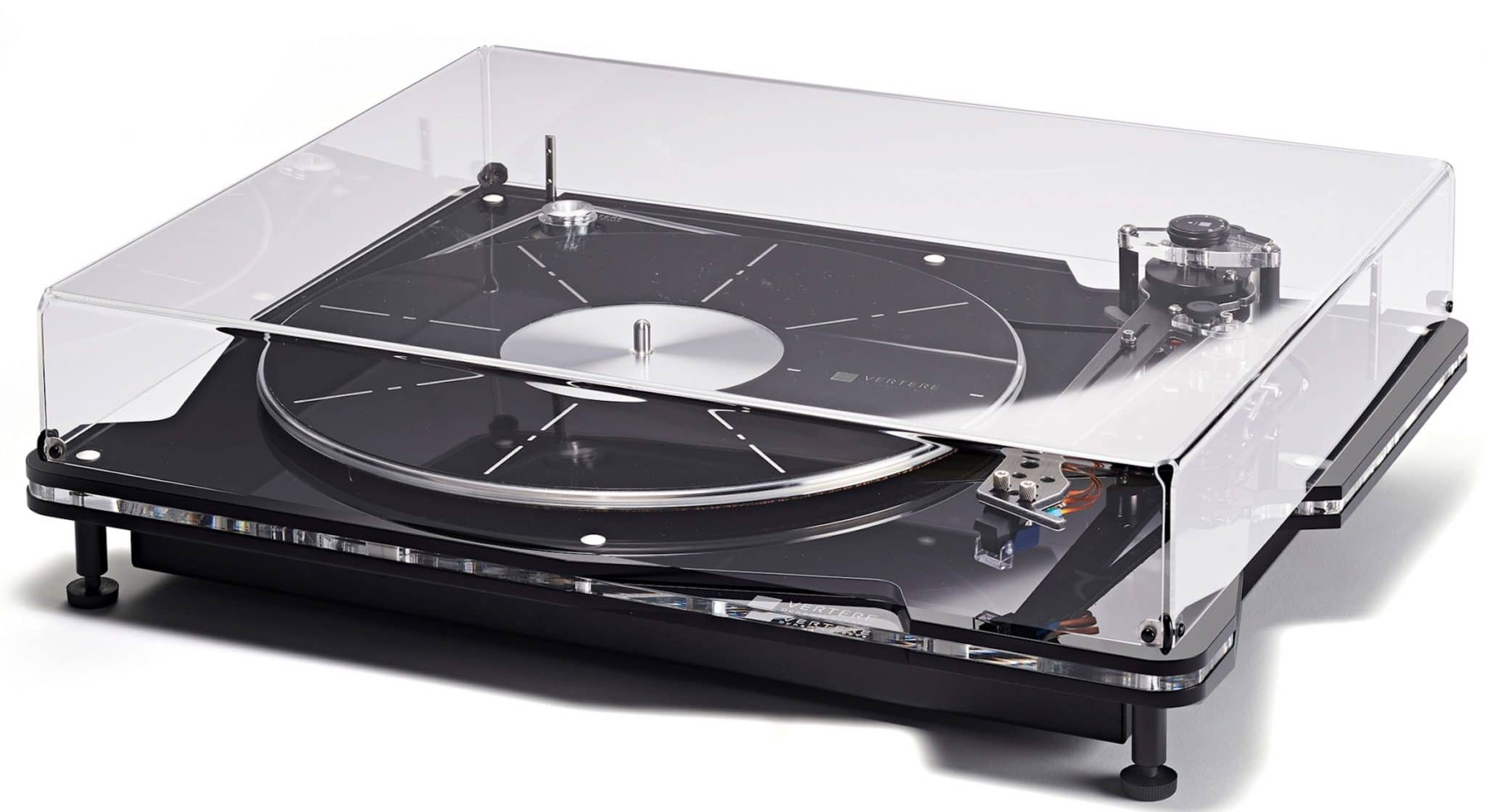
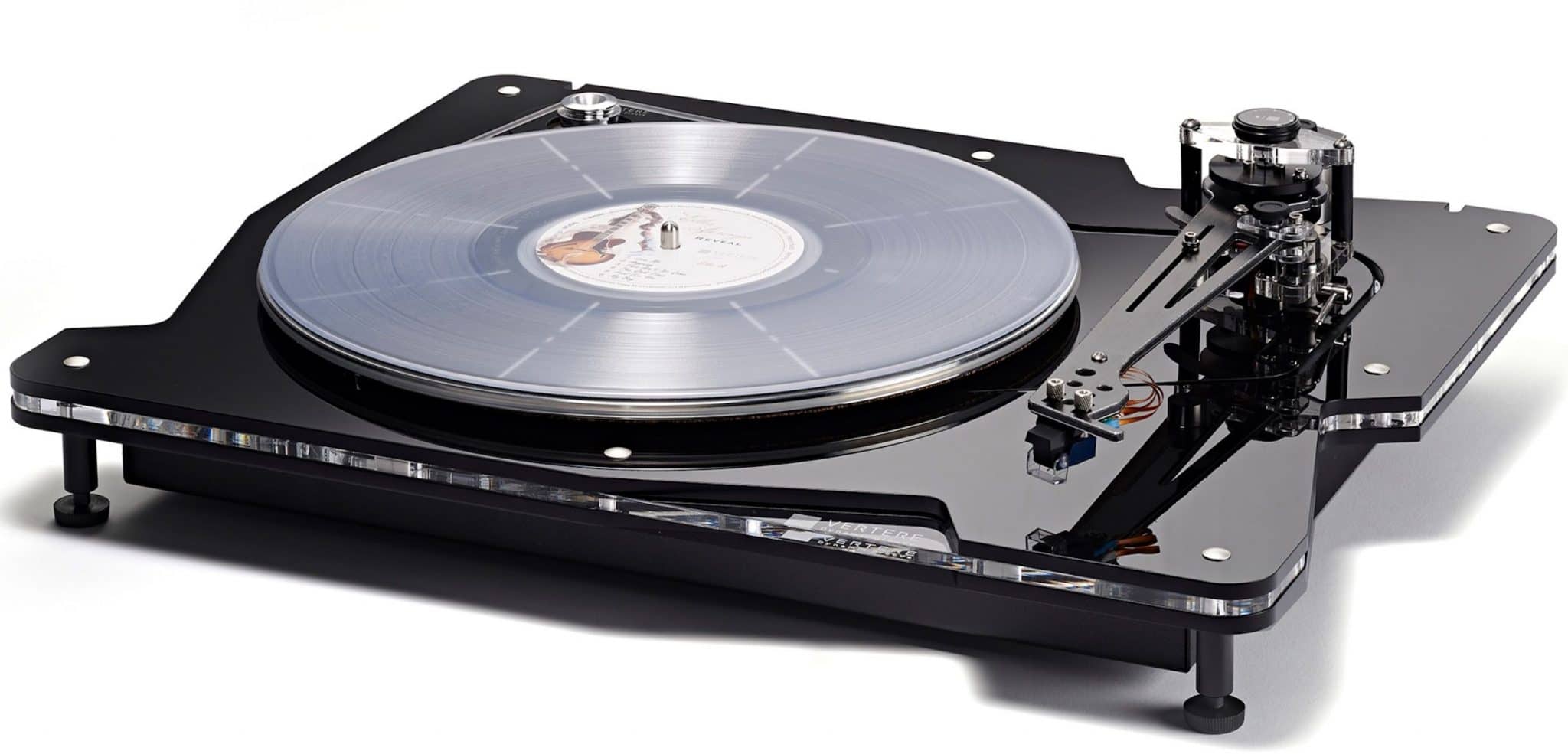
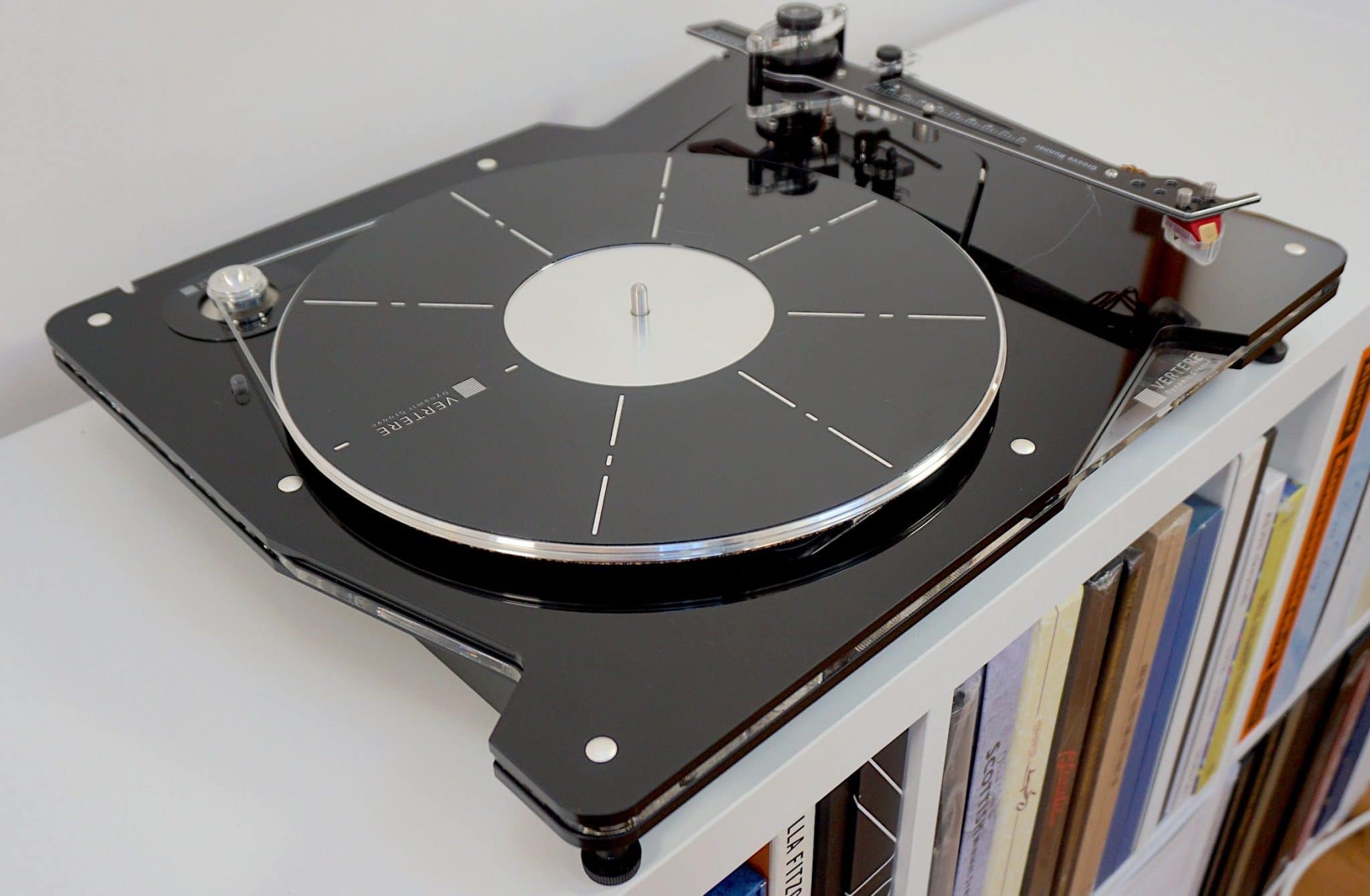
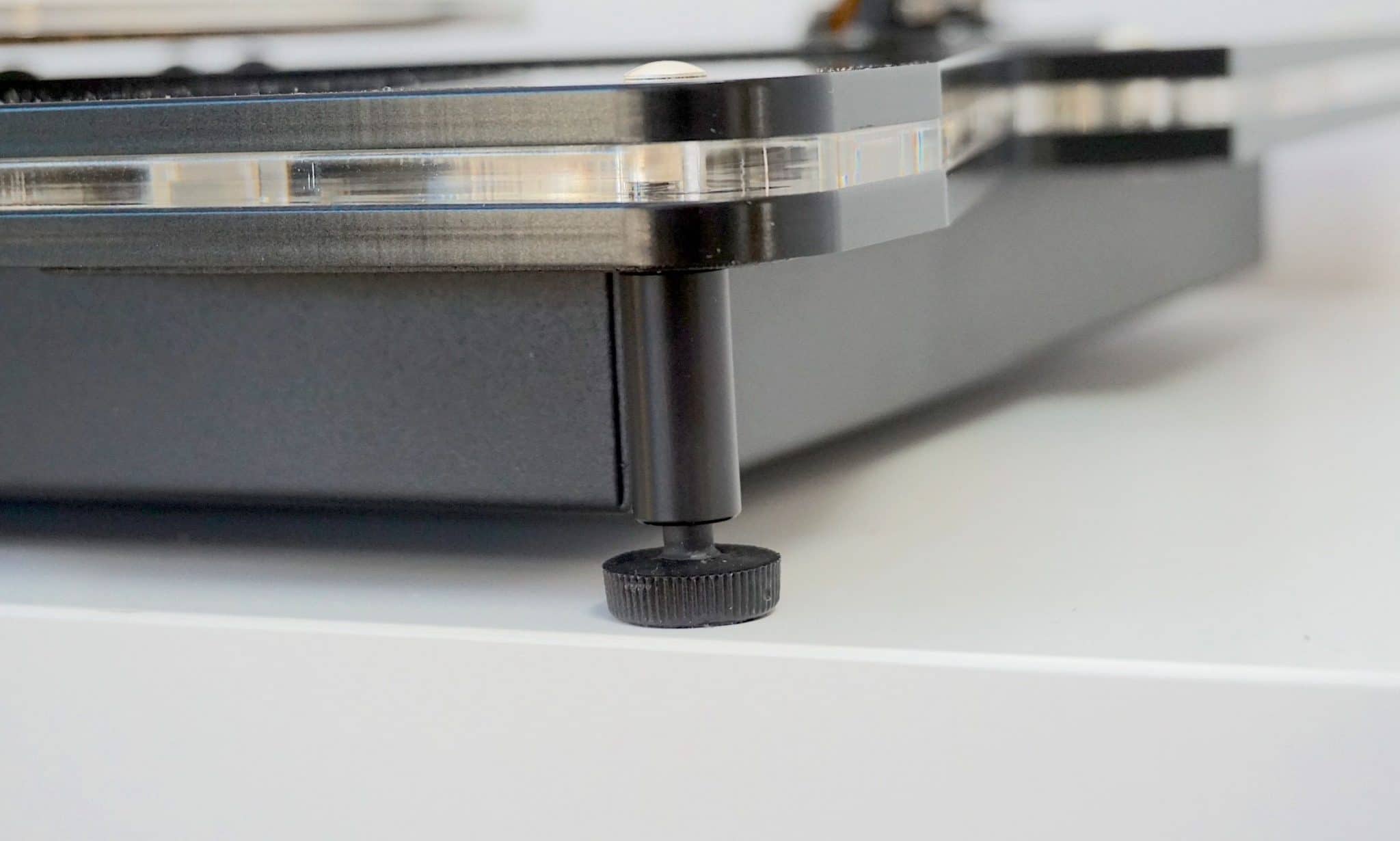
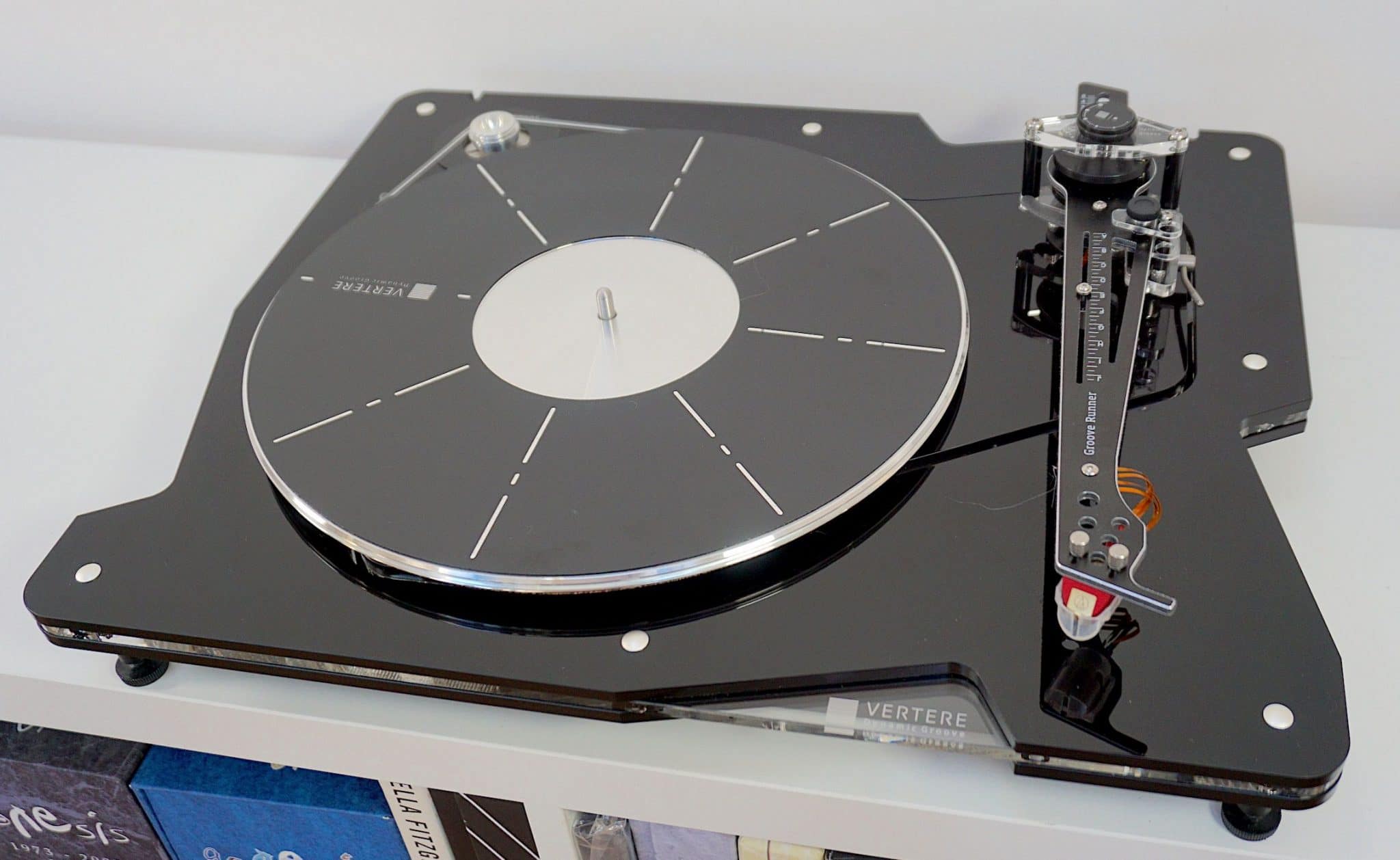
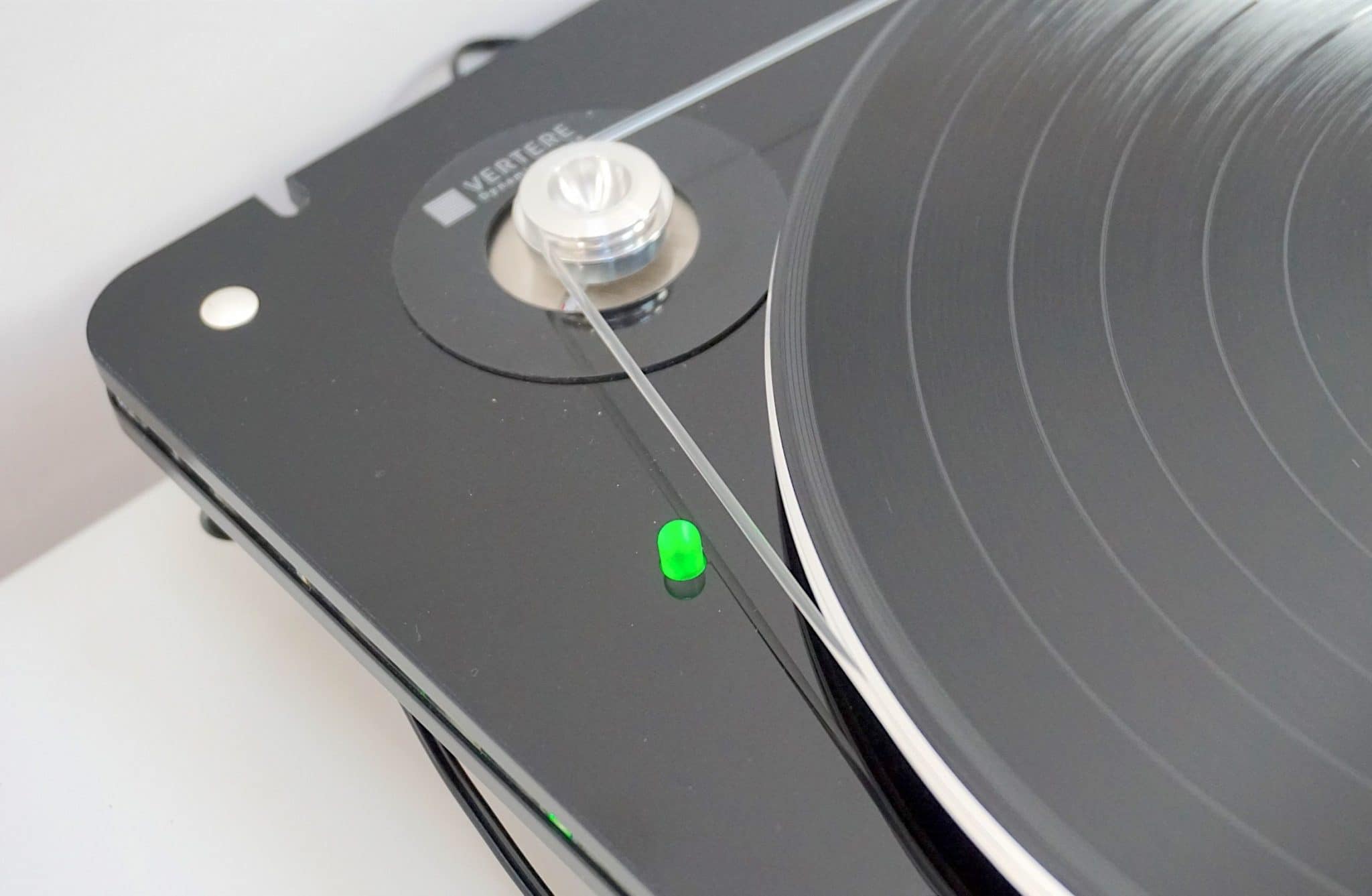
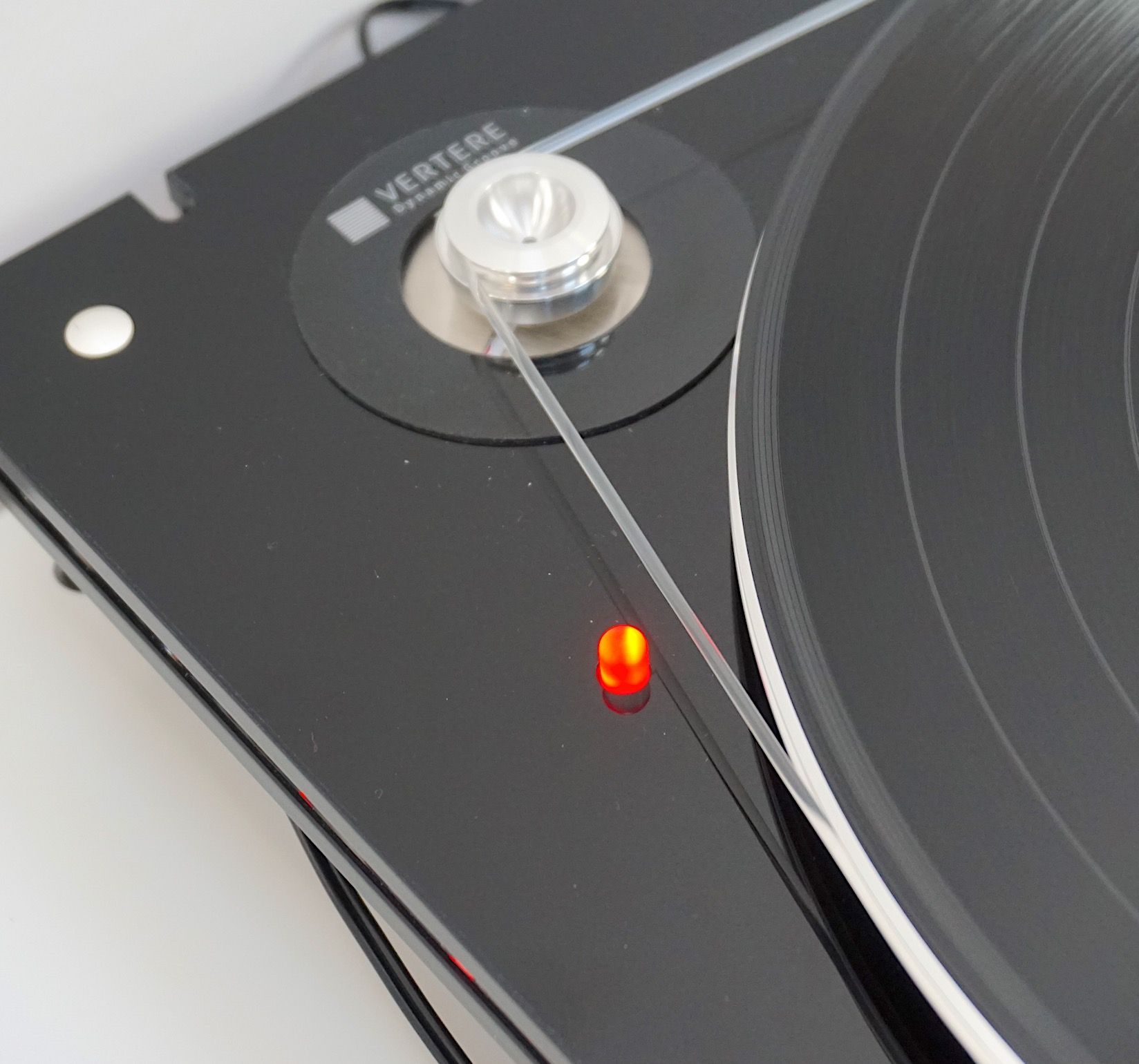
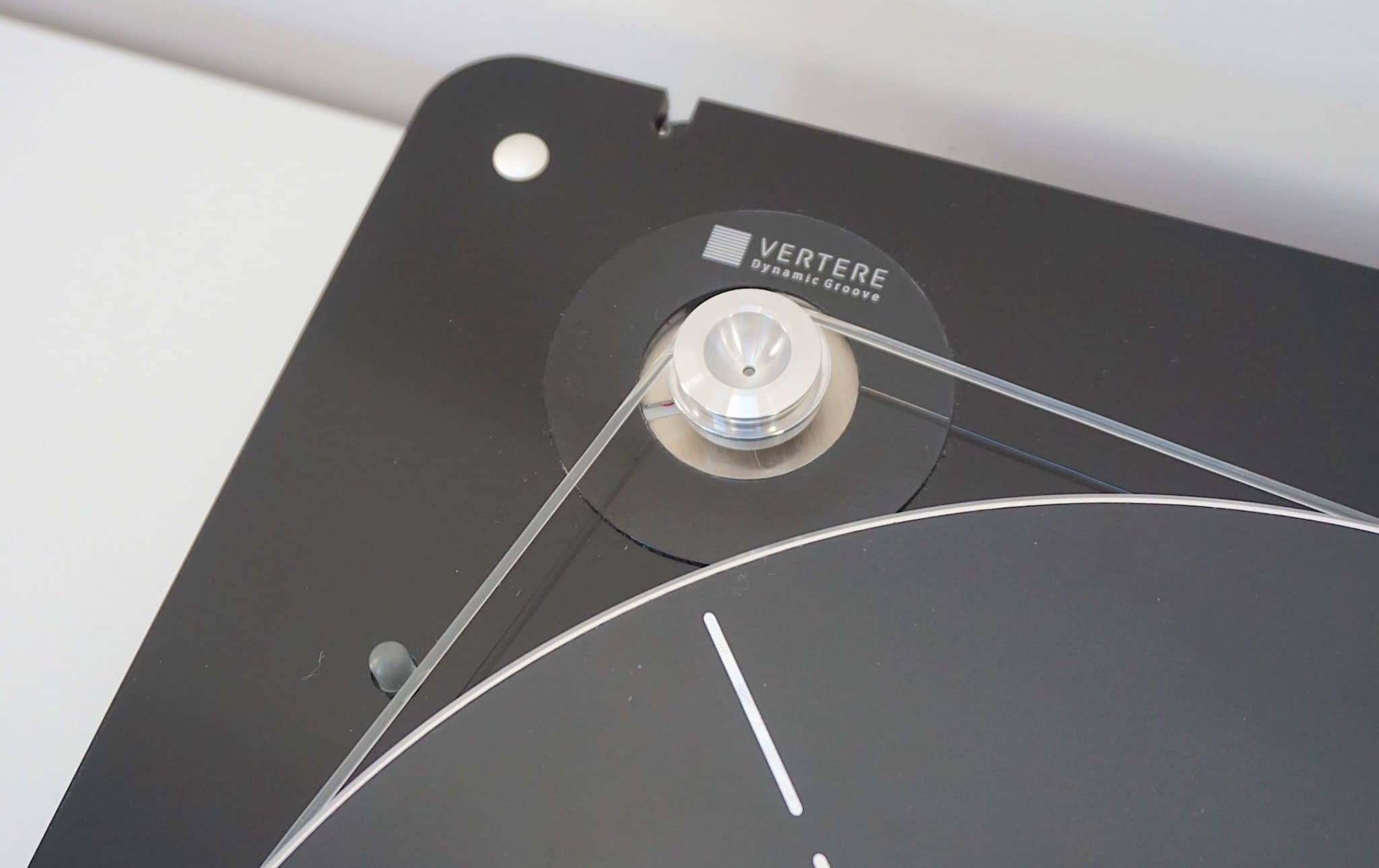
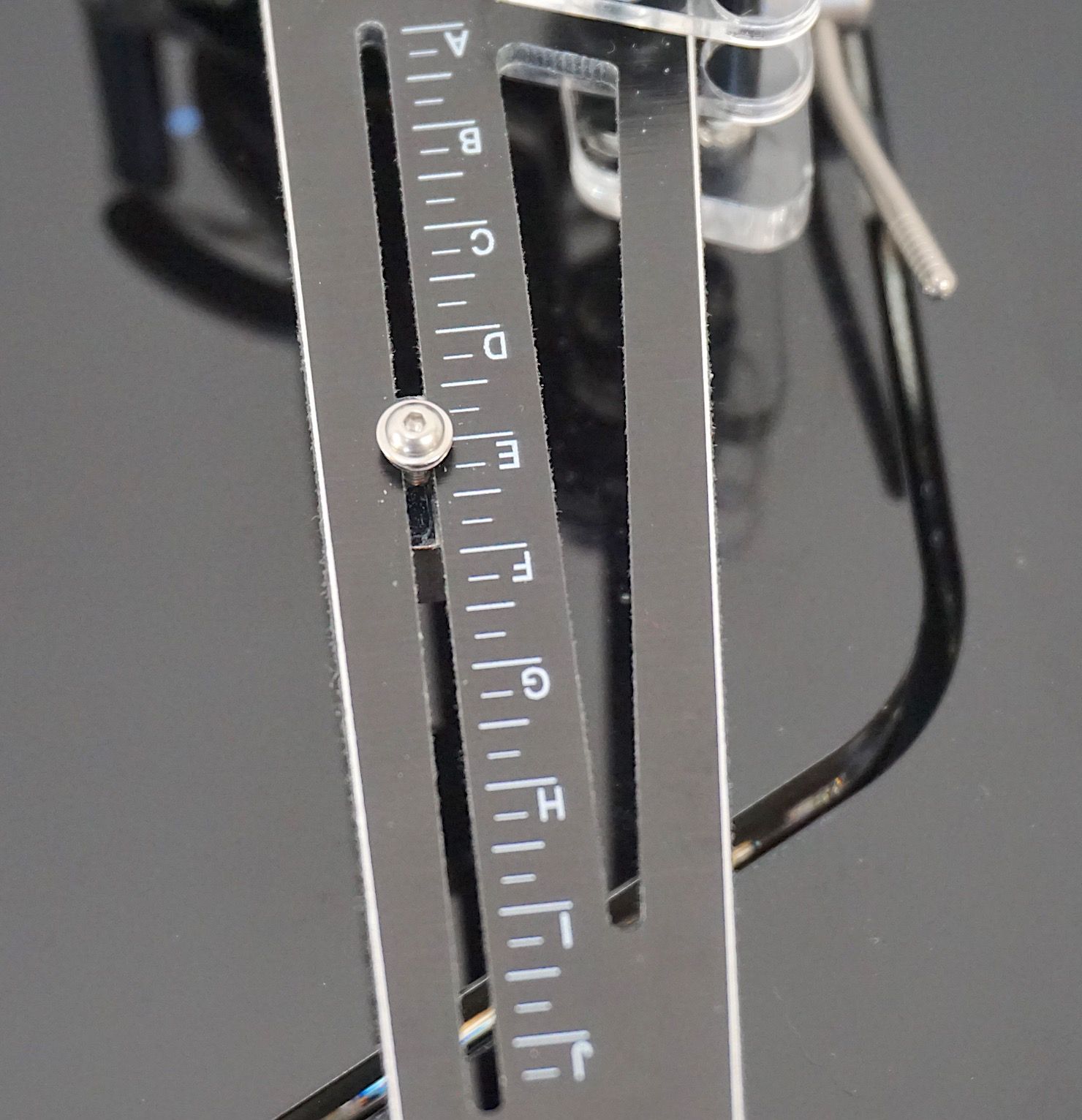
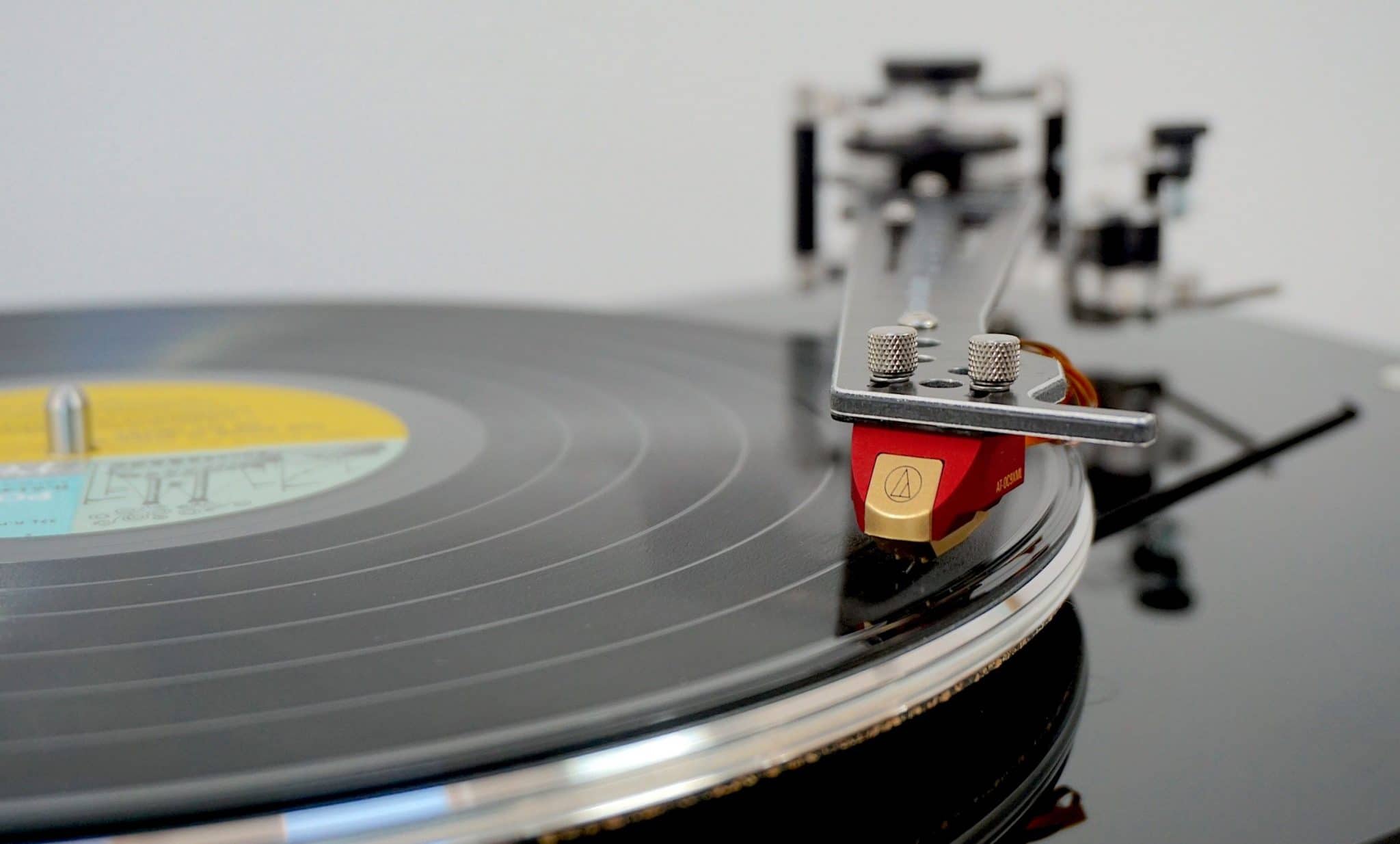
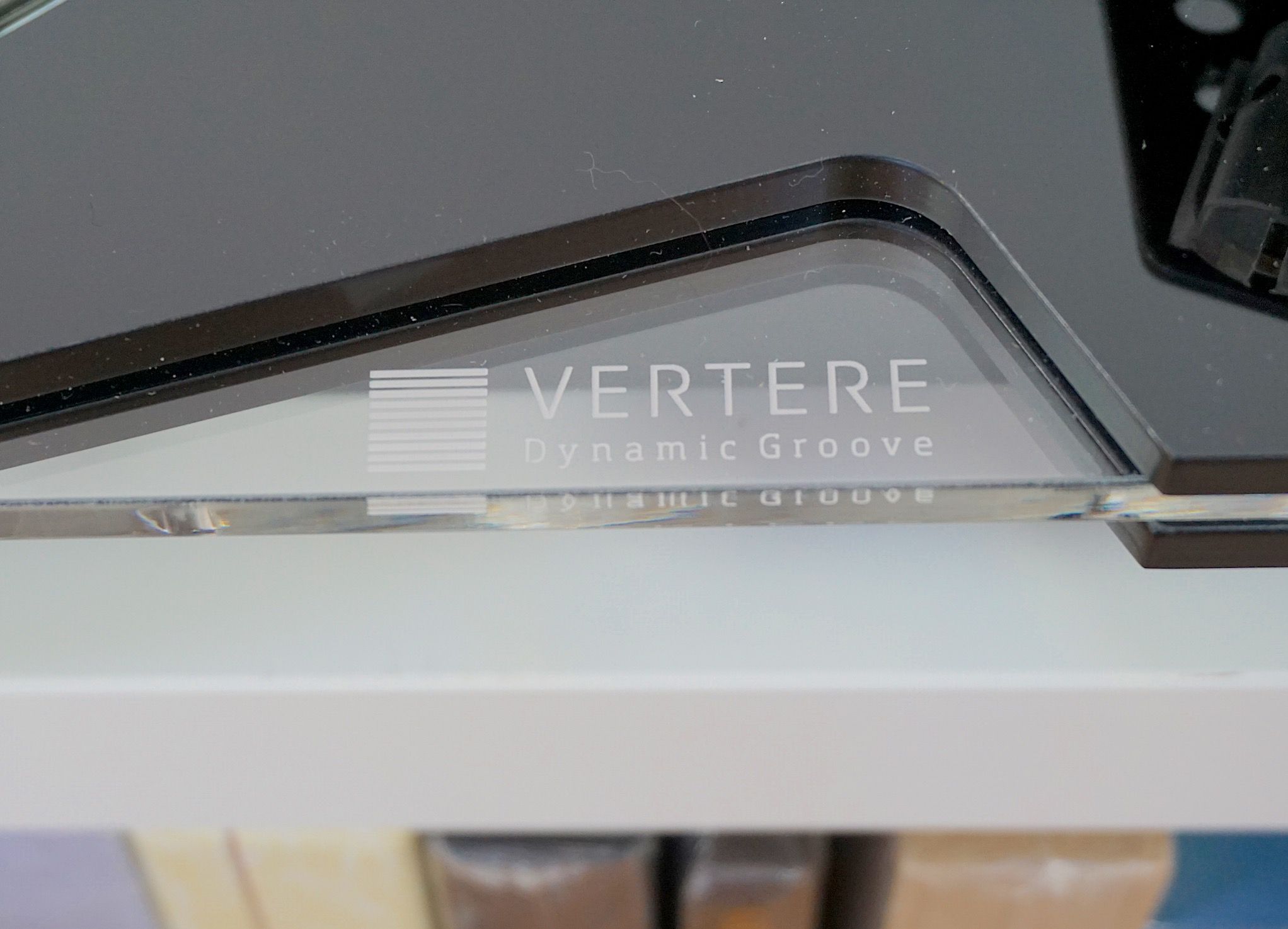
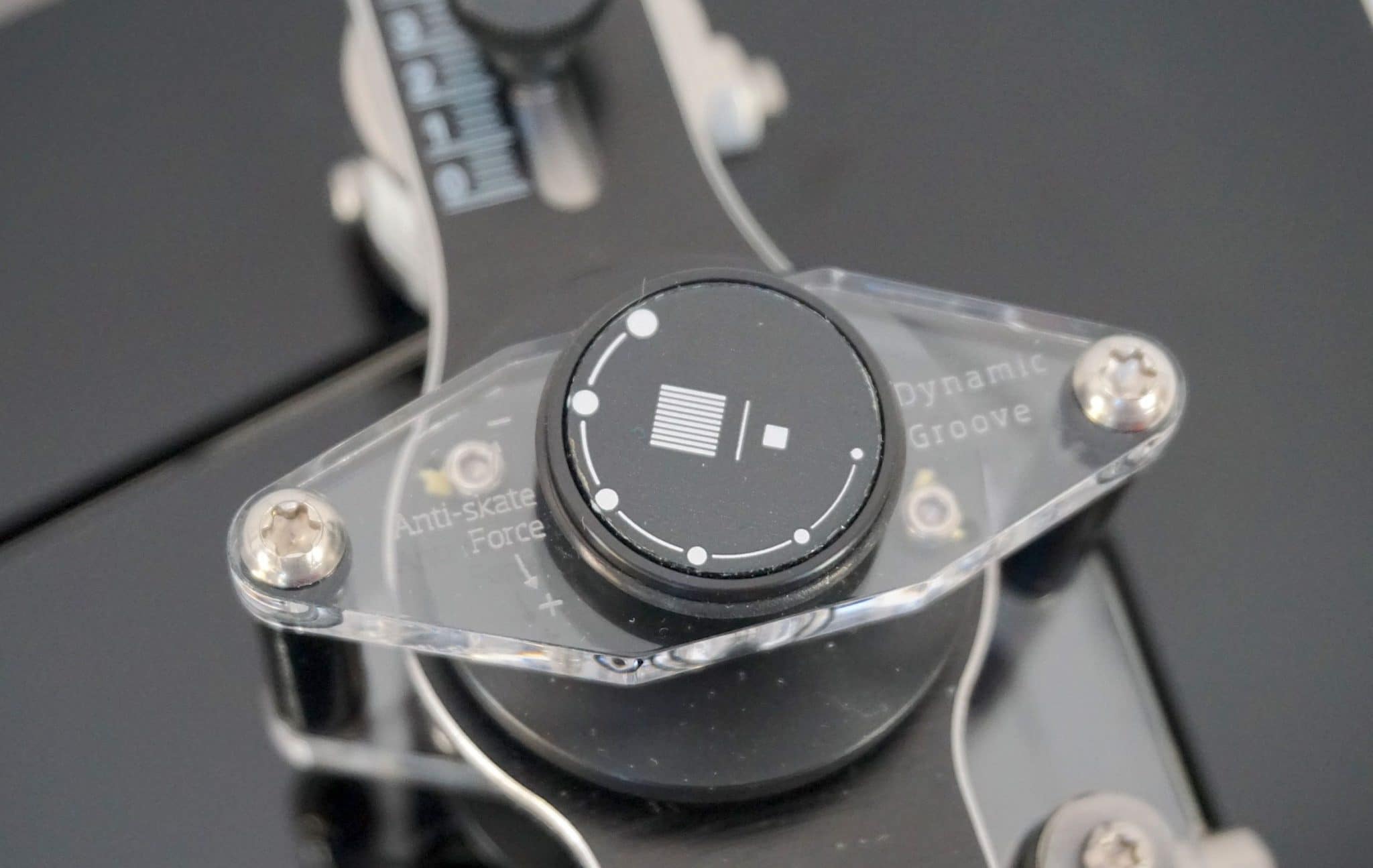
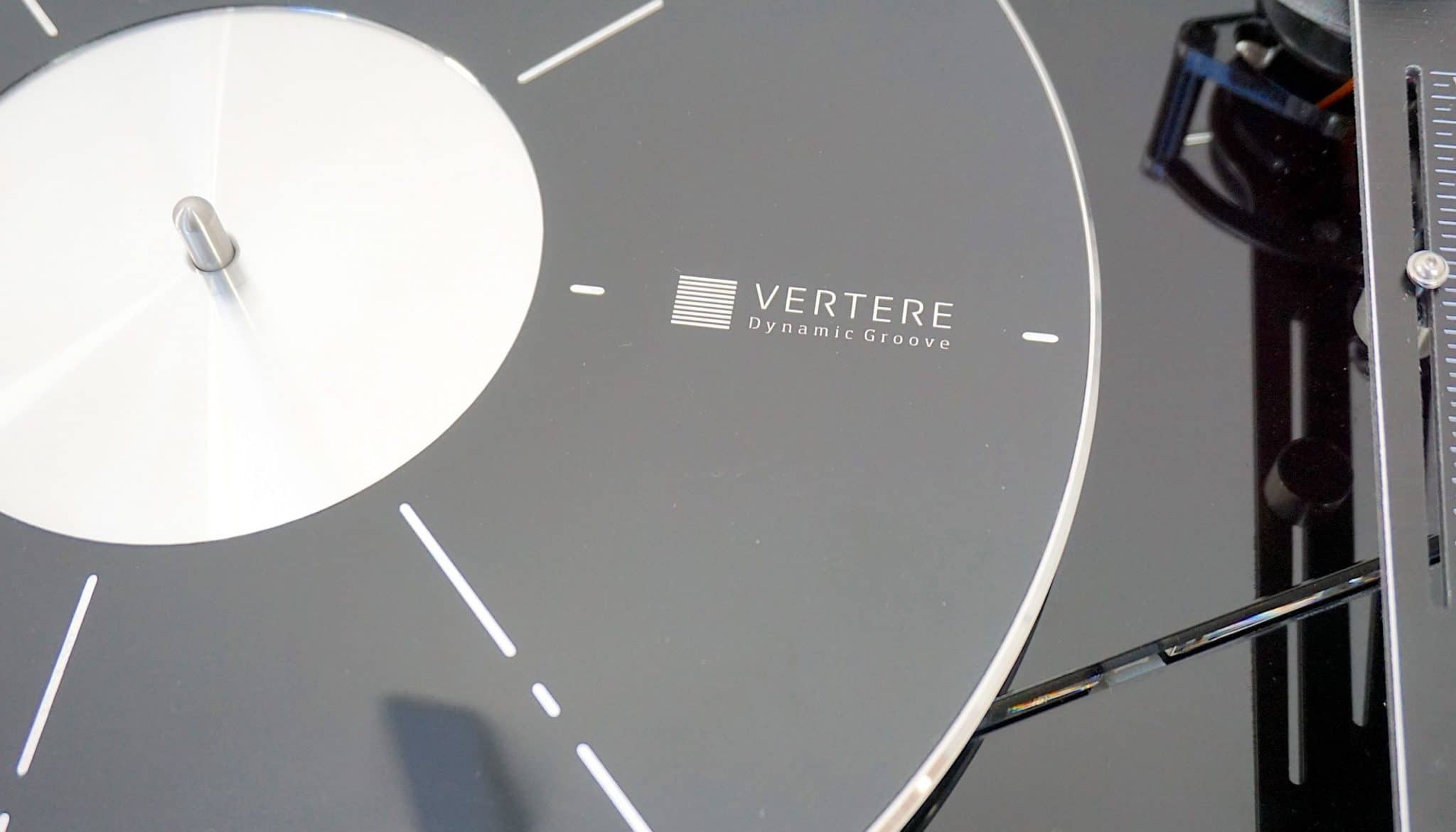
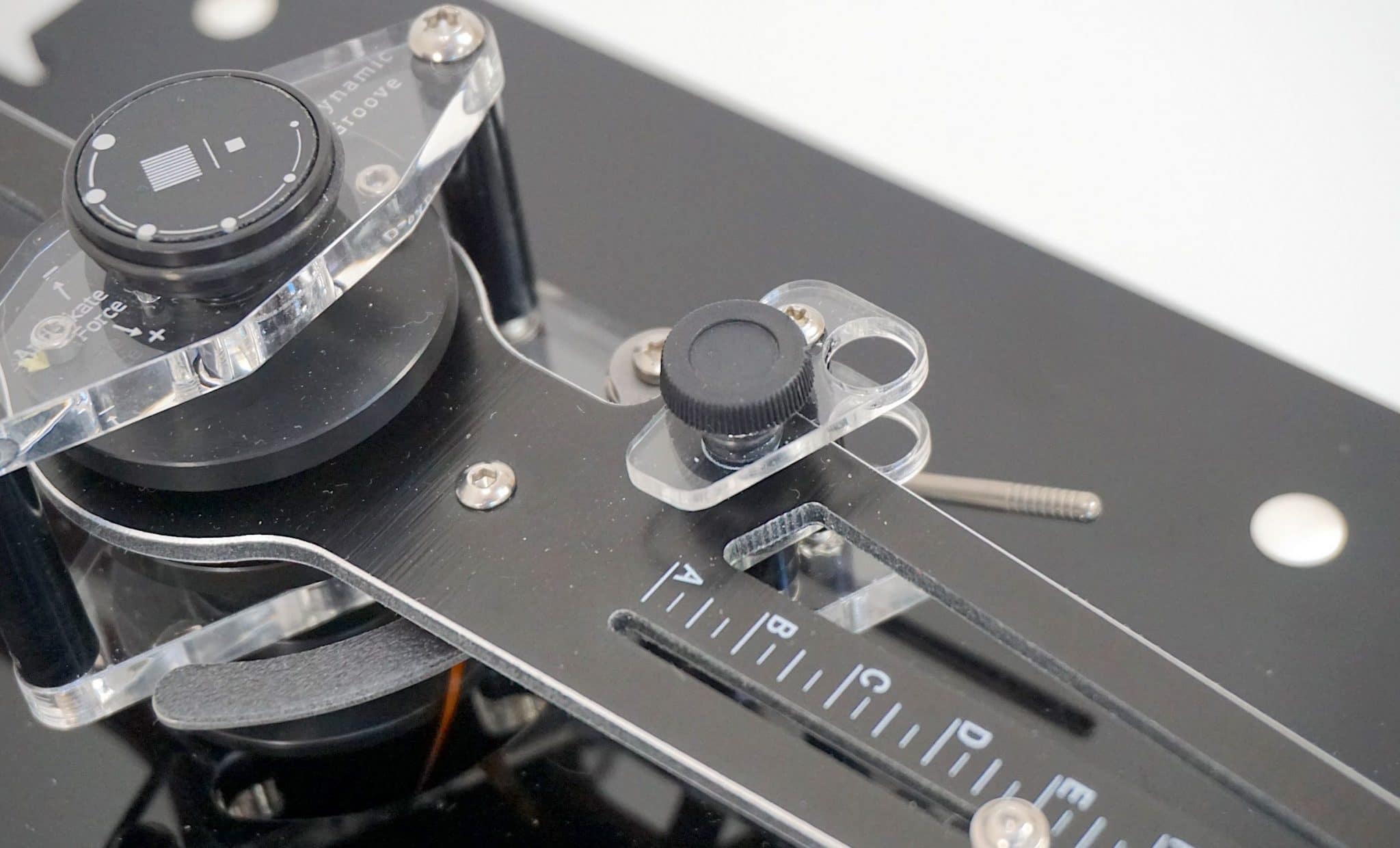
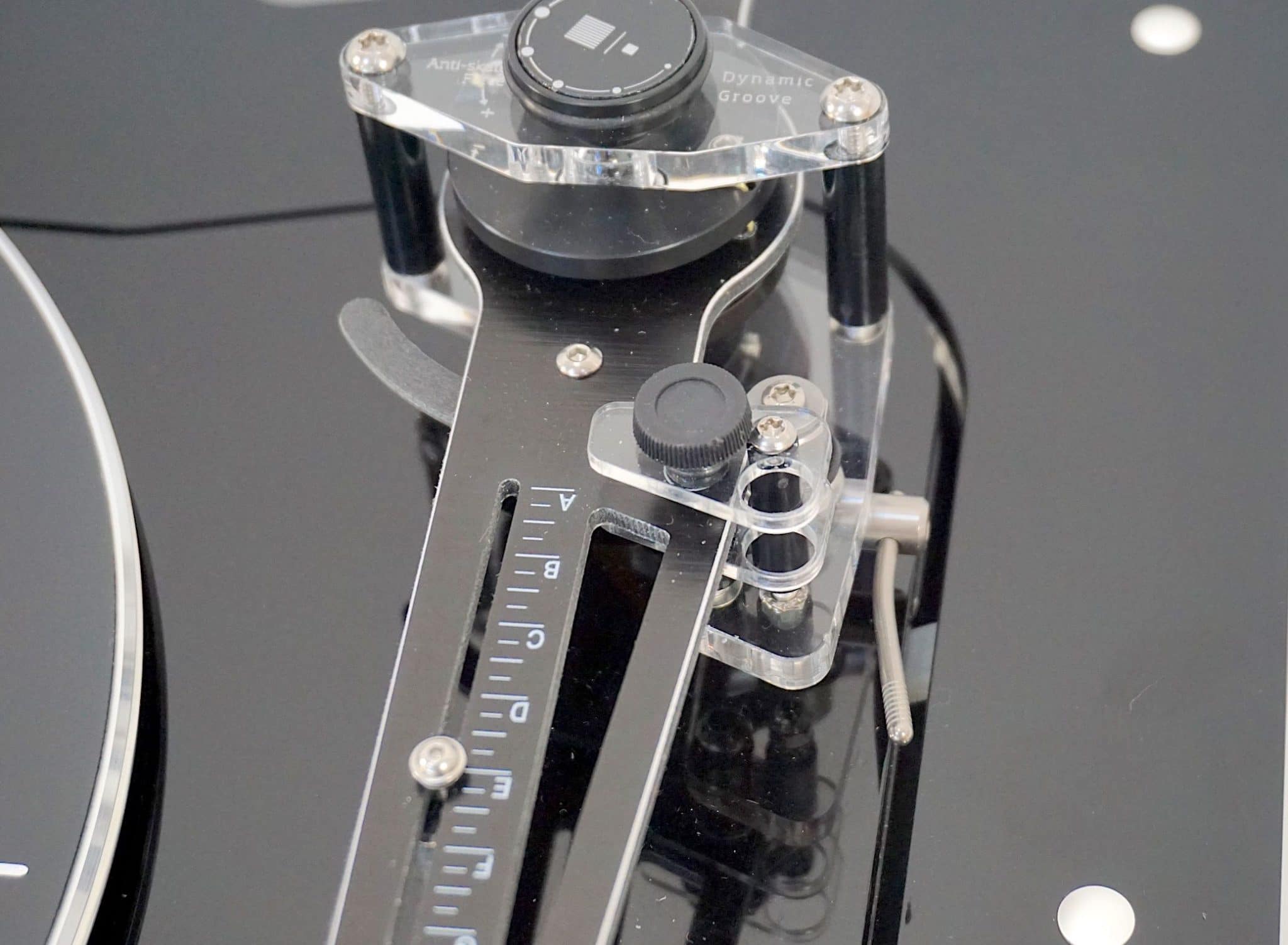
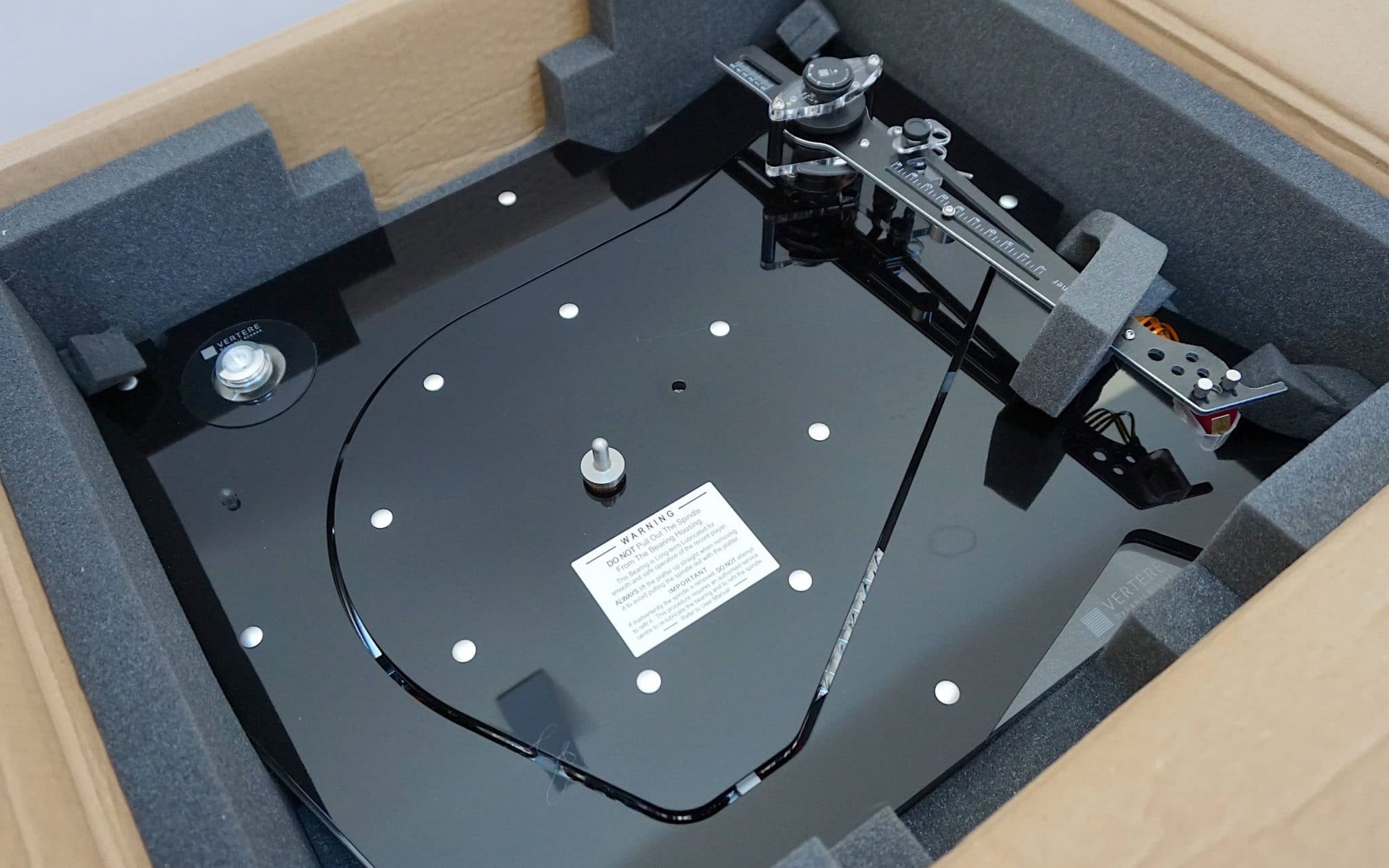
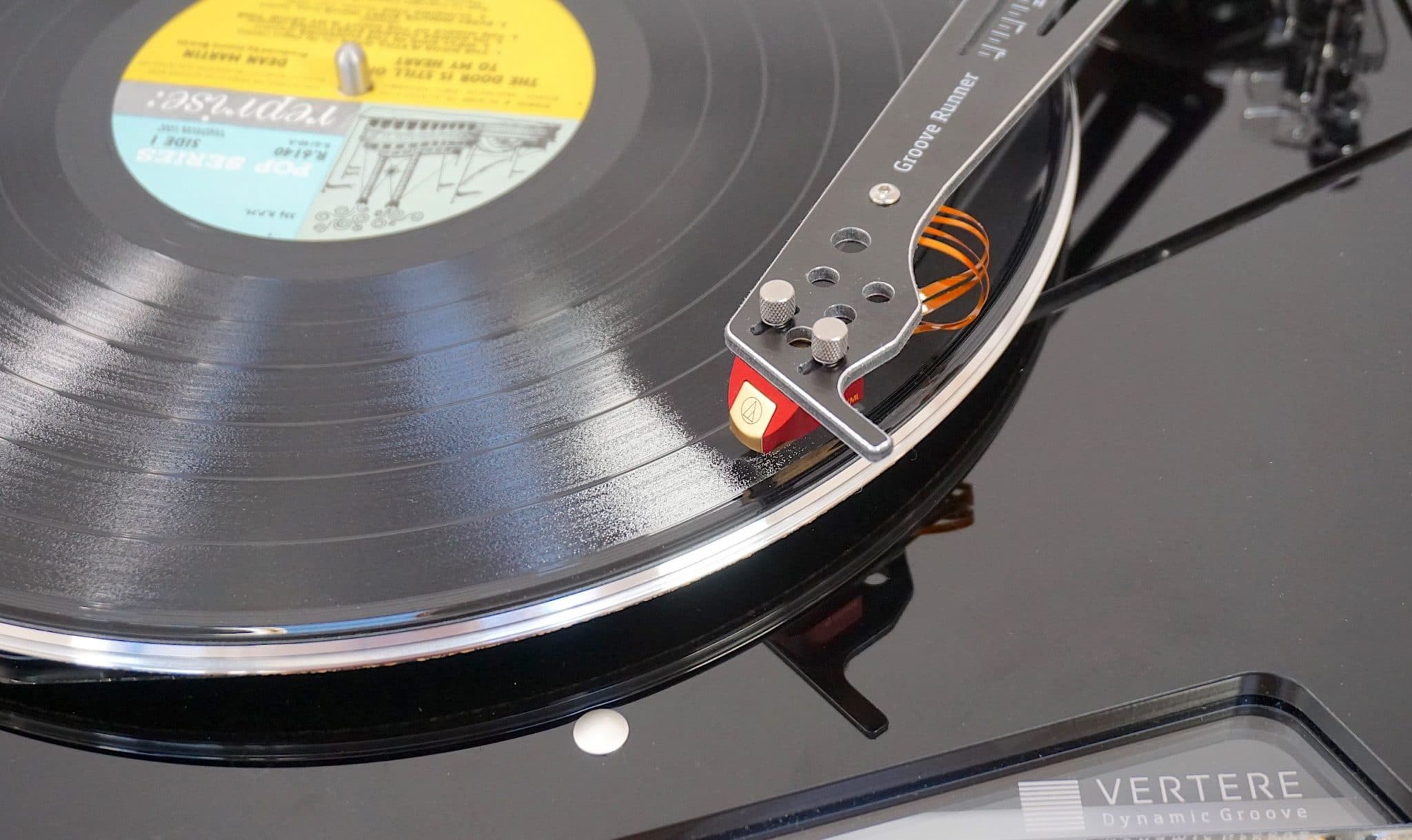
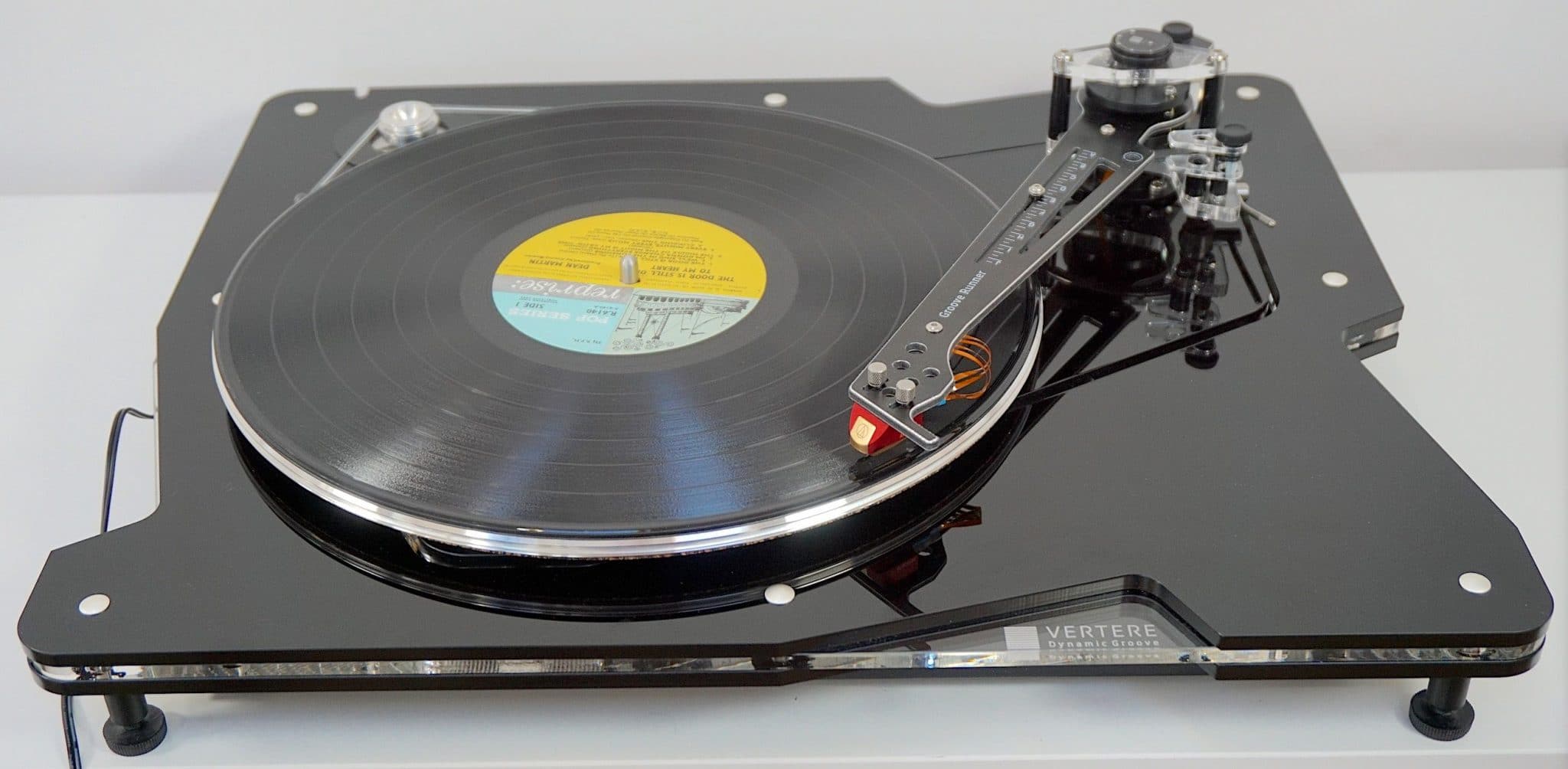
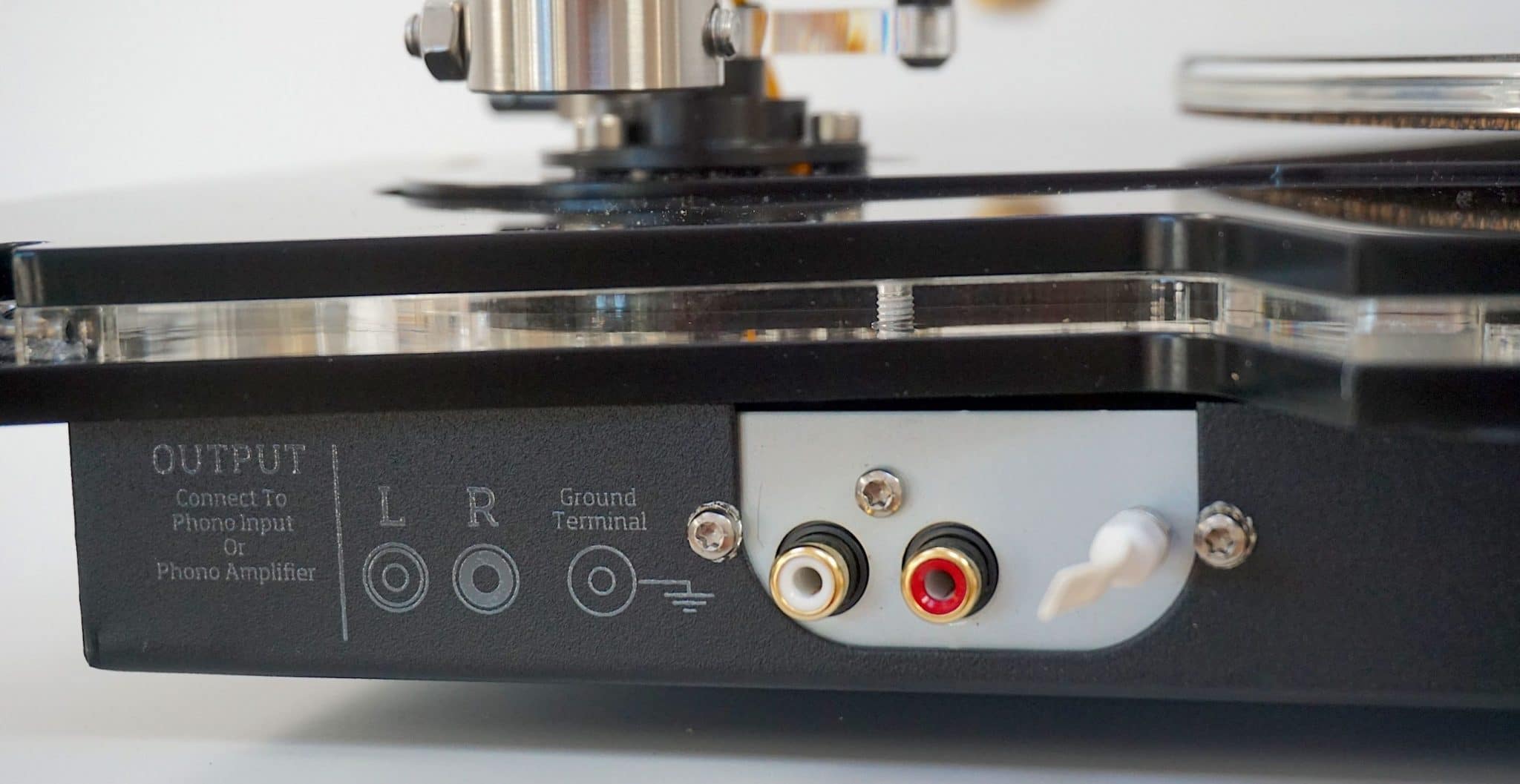
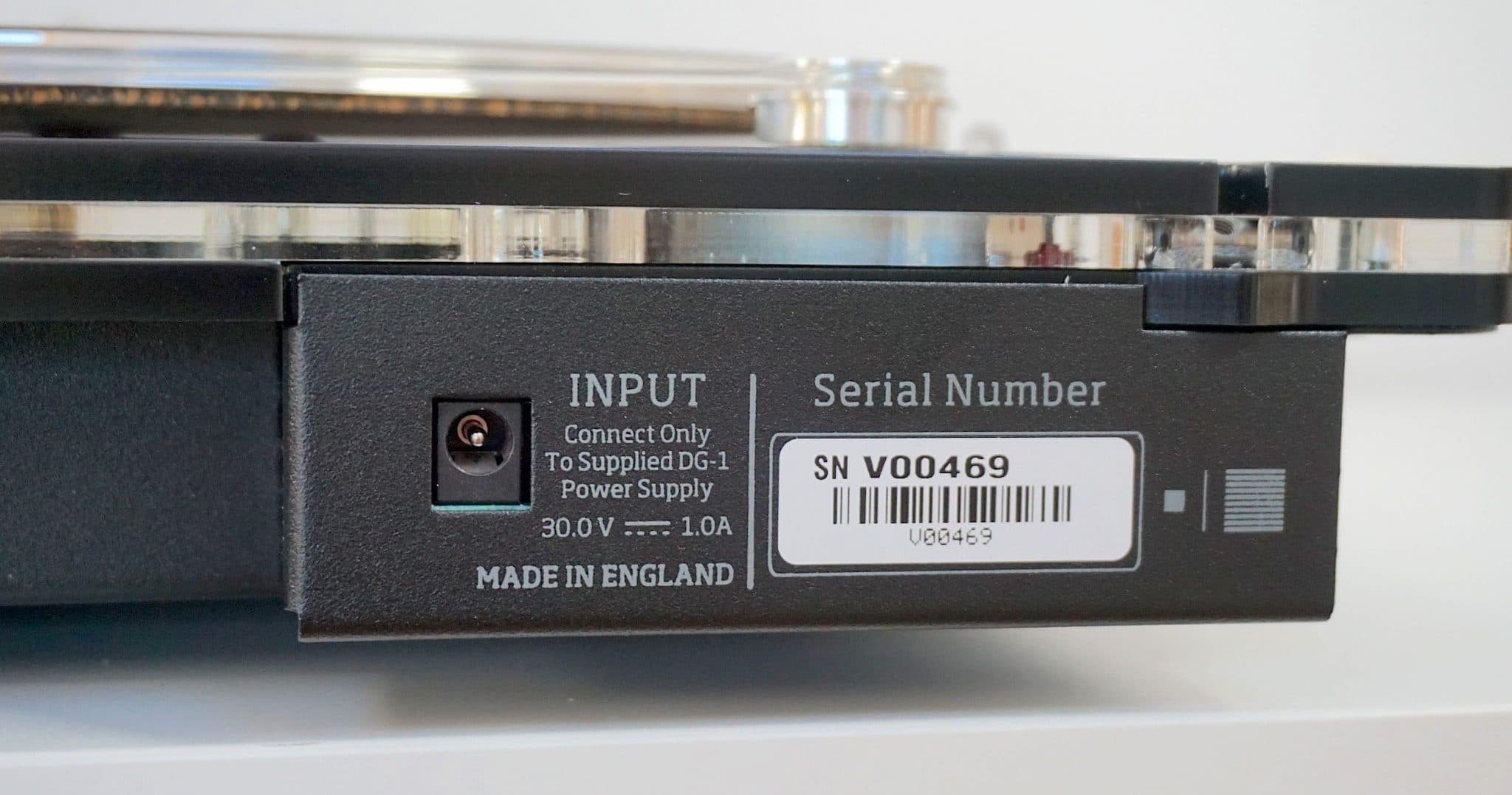
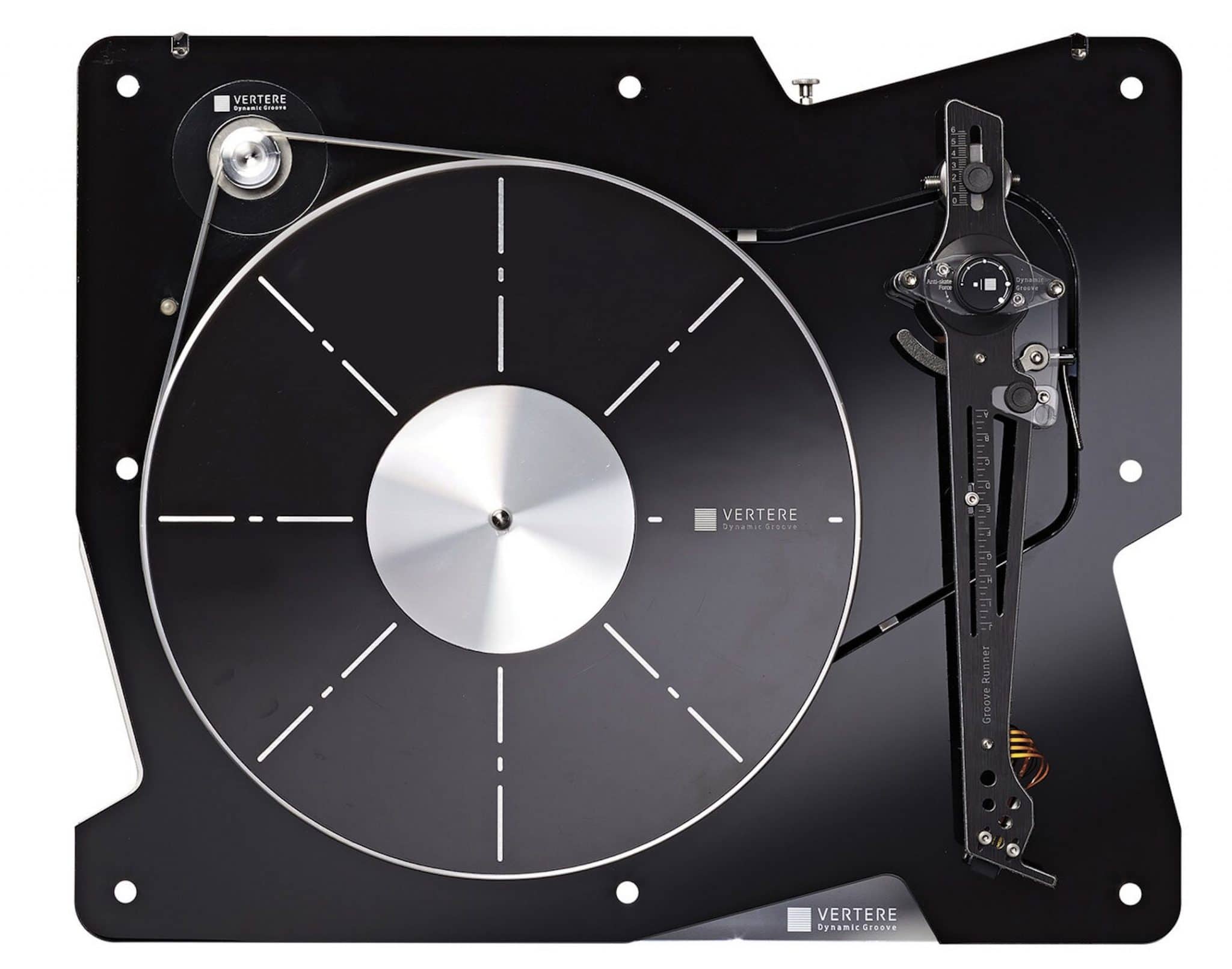
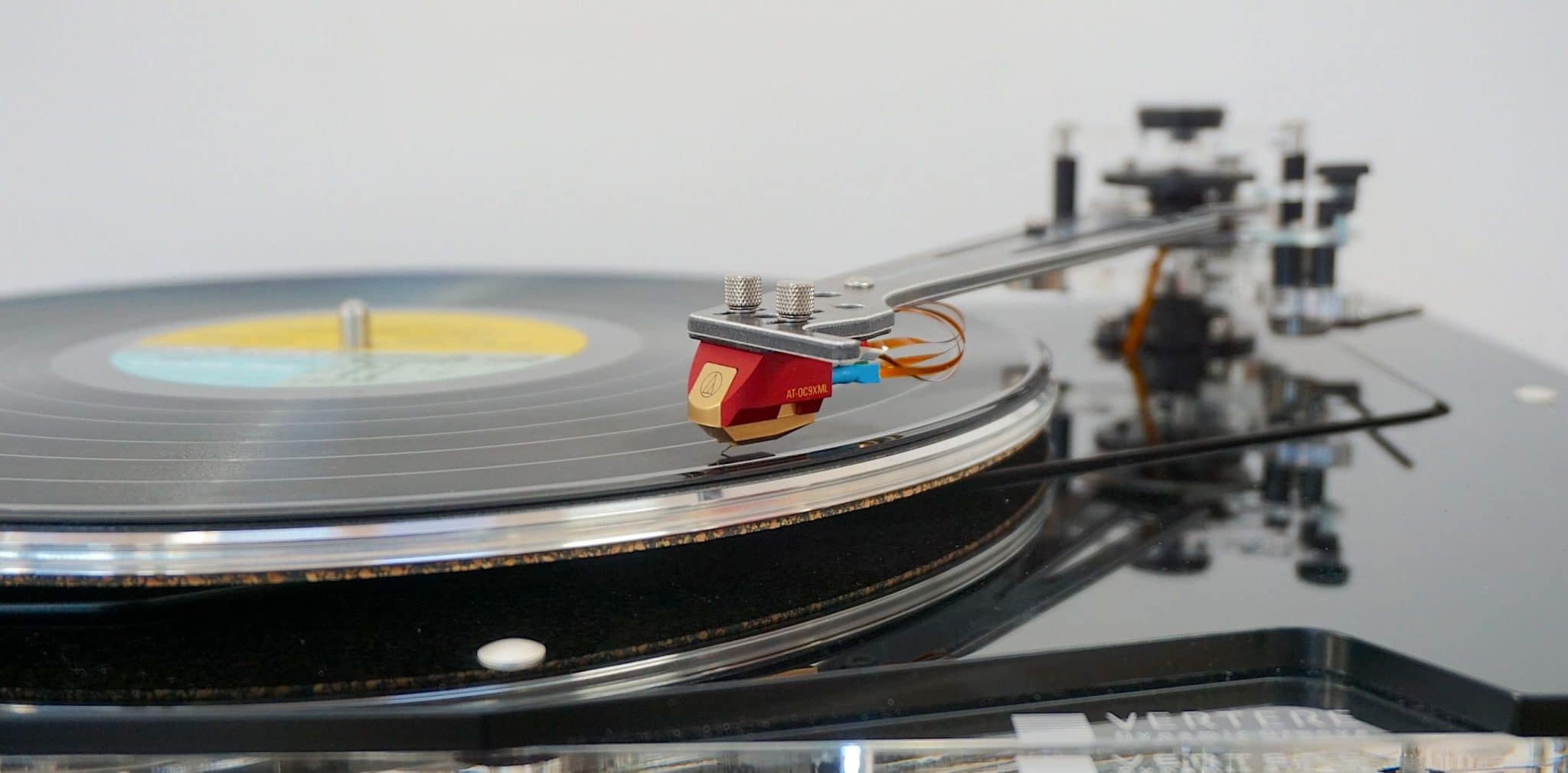


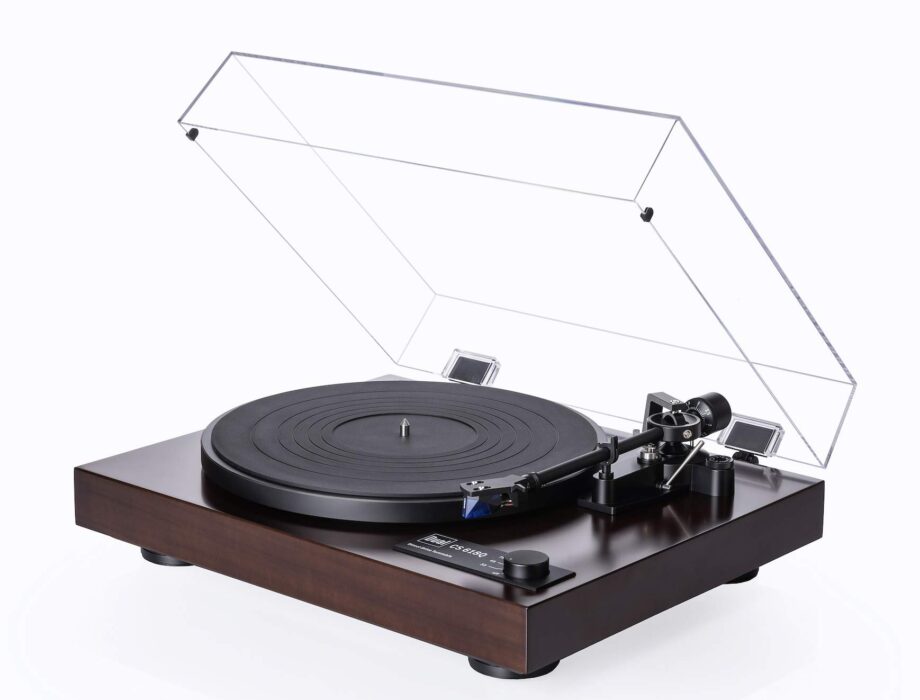
I had one on a 2 day home demo last year. I was meant to be working from home, but looking back didn’t get much done as I kept trying out records continuously till the small hours, it’s certainly addictive.
I have to say I’ve not come close to knocking the belt when pressing the button and actually like the simplicity of the design and the colour changes. I do agree regarding the lack of a tonearm clip, I also used the transit screw and suspect a modified golf tee might become used! I’m sure Touraj will come up with better solution.
Comparing it to my RP8/ Apheta 2 MC the DG1 with audio Technica 540ml MM cart was a big step up in all areas, I appreciate that a MC cart would be another level up from this but I’m happy with the MM and not having the ticking bomb of huge expense to replace.
Glad you like it SS and sure, I can see that some users would disagree with my thoughts. As I mentioned in the review, I didn’t find the issues major in their effect. More irritations that I could have done without. Well, to me at any rate. And I’ll have a vision of a golf tee stuck by the arm in my head all day now, thanks for that. 🙂
Just a quick update, I would agree that the standard supplied MM cartridge is indeed a bottleneck.
I ordered mine with this cart but have recently replaced the stylus with the microline version (VMN40ML) and the difference is quite transformative.
Much more detail, deeper bass, tracks better so hardly any surface noise. Overall a much fuller more dynamic and detailed sound. Can’t stop playing records.
Good stuff, SS – many thanks for the update.
Hello, I read good reviews of this turntable. Could you comment on its sound compared to say a rega p8 with apheta 3?. Or to a funkfirm model? (I have only heard the Gett!, which i also read good reviews, althought it is at a different price point). Thank you, marti
I haven’t tested the Rega so can’t comment but this review used a Funk LSD as a reference so many of my Vertere comments were given with that turntable in mind.
Hello, Thank you for your reply..so for exampe, should I read between the lines and when you mention about the track Sir Gavin Grimbolt on the Gryphon record that most decks can’t handle the detail on the guitar strum as well as the Vertere, that includes the LSD (and Gett!)?. Or whenyou emtin you rarely heard the track Somebody to love float aroundyour ears so smoothly before, you also have the LSD in mind? On the other hand, in another track you say the bass is lean but nimble well defined on the Vertere, should i understand the LSD that bass is more present, for example?. JUst to interpret correctly. Thankyou very much, marti
Generally, although I also have other turntables in my mind when I say these things, designs I’ve heard over the years. The LSD is a good ‘refresher’, you might say and it helps to put the Vertere in a broader context. So this is not a head-to-head with the LSD. If it was I would be listing the LSD’s pros and cons too. Instead see, the Vertere comments as how I see it fitting in the market amongst its peers. The Vertere is far superior to the Gett!, incidentally but at that price, it should be.
Has anyone compared this to a Rega P-10?